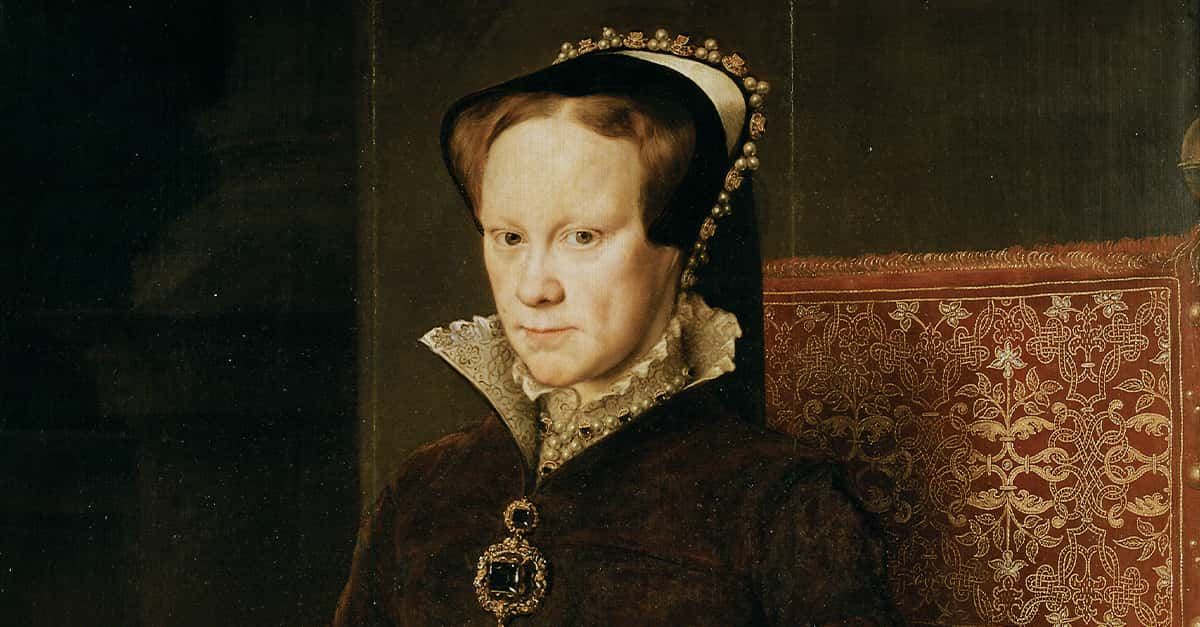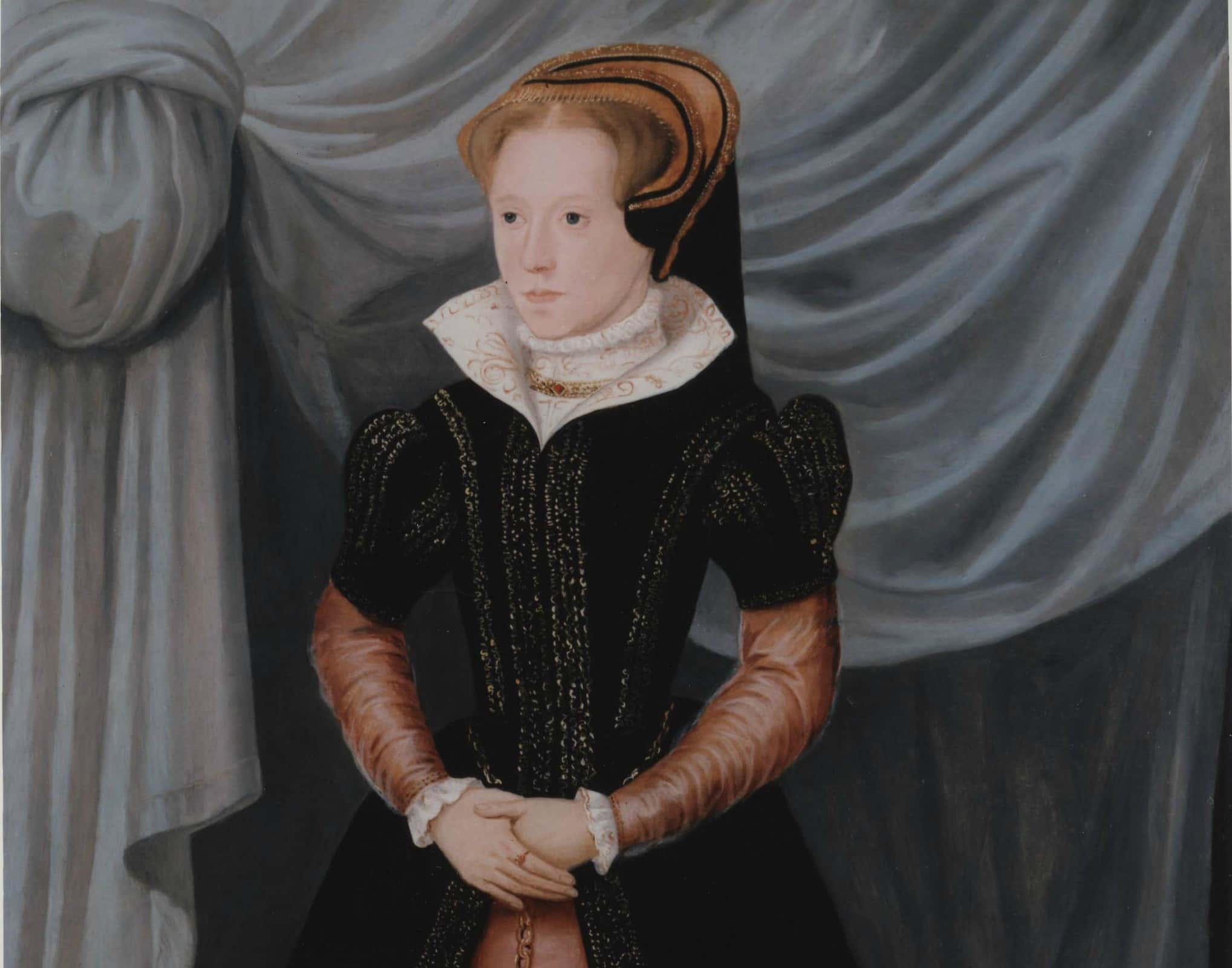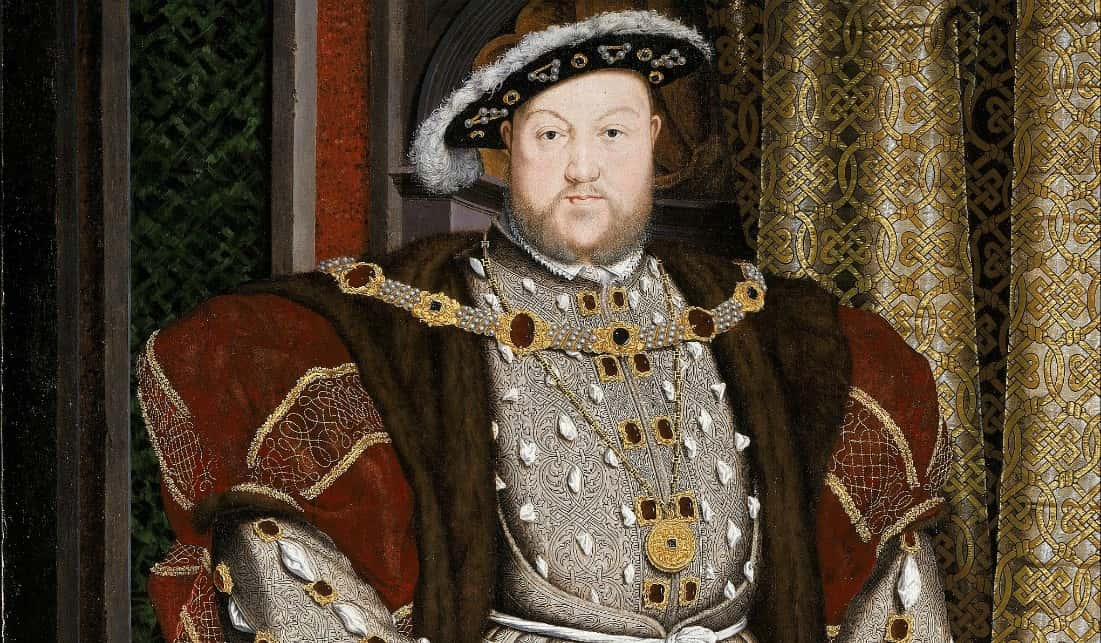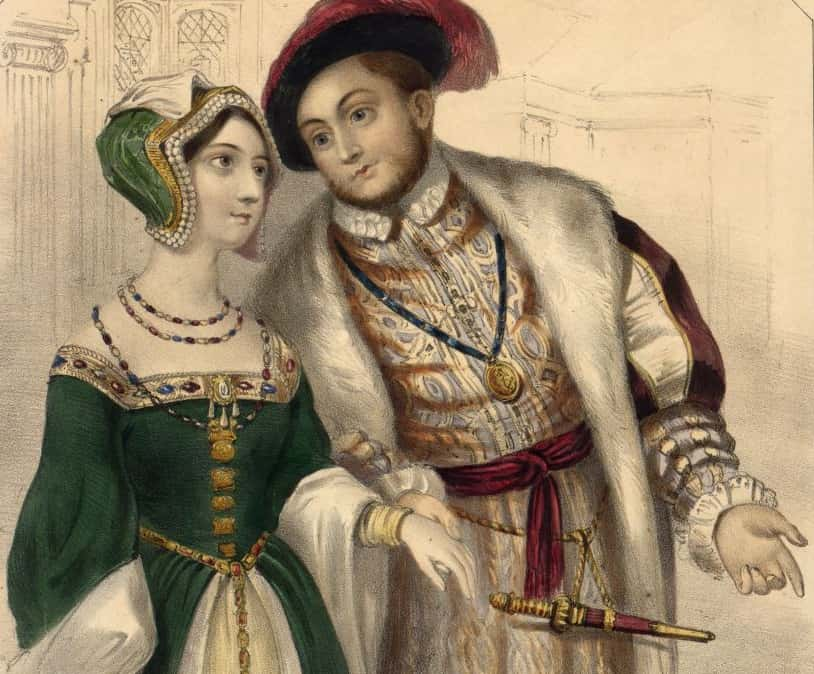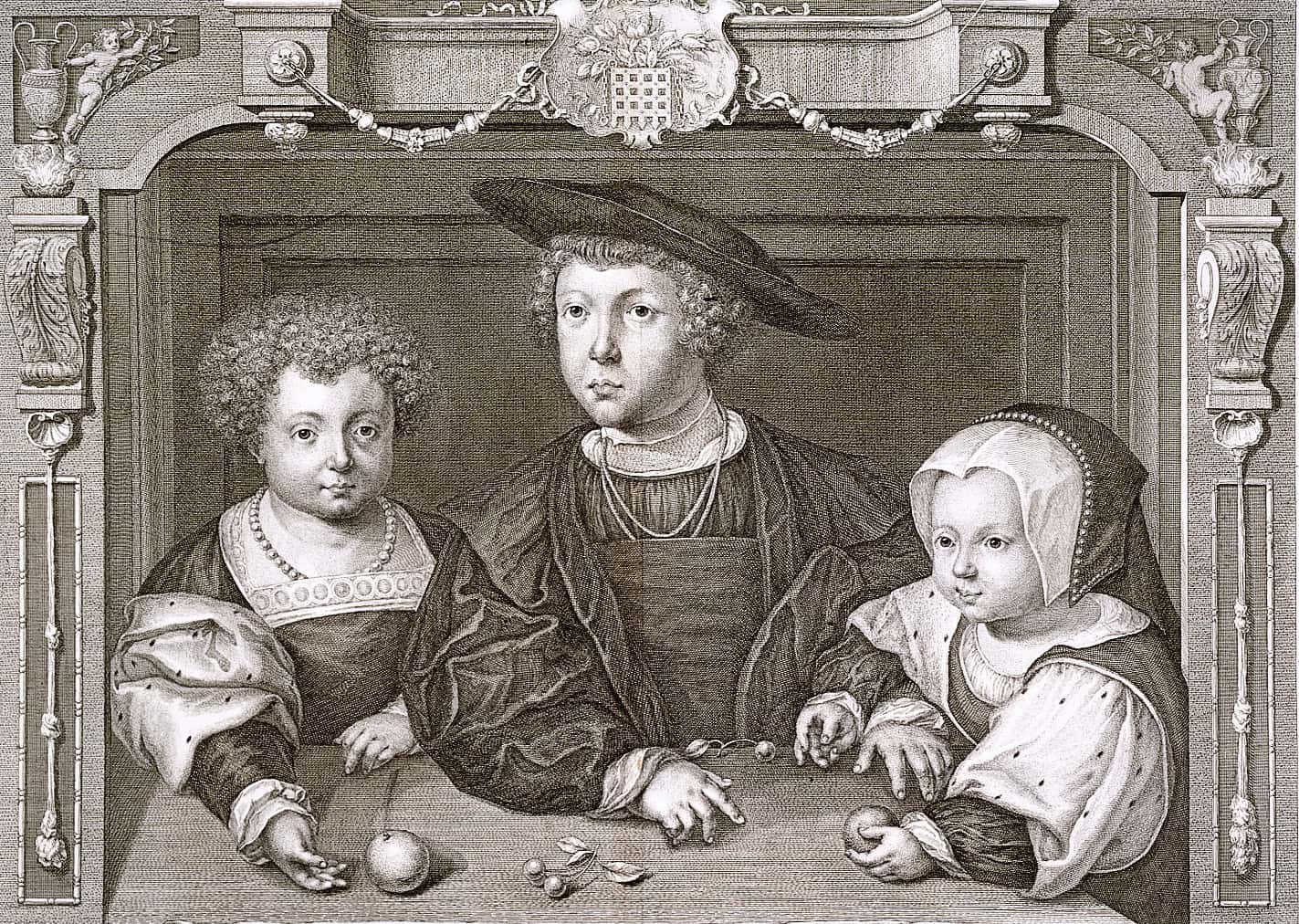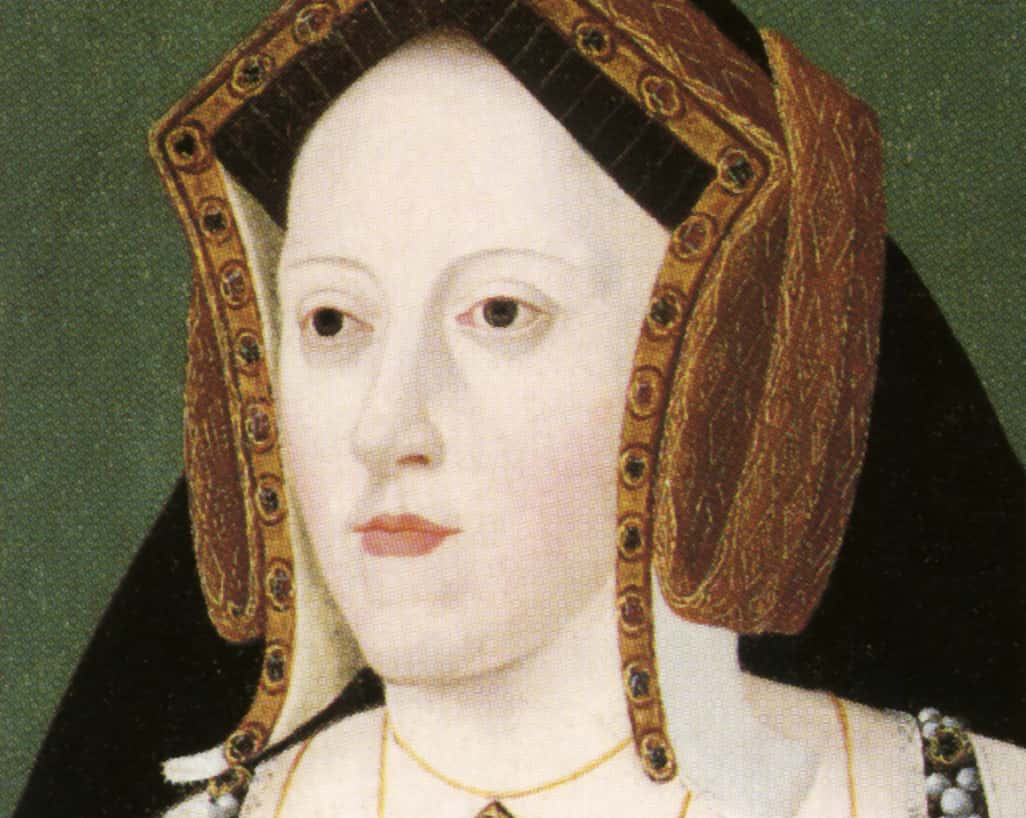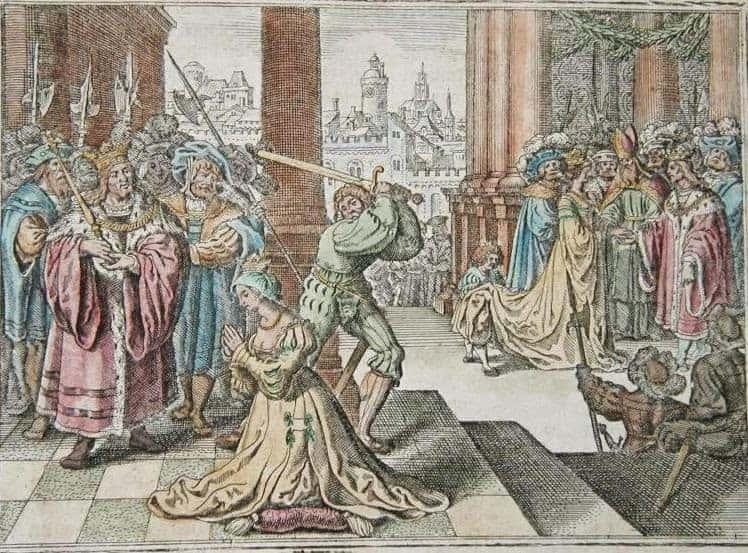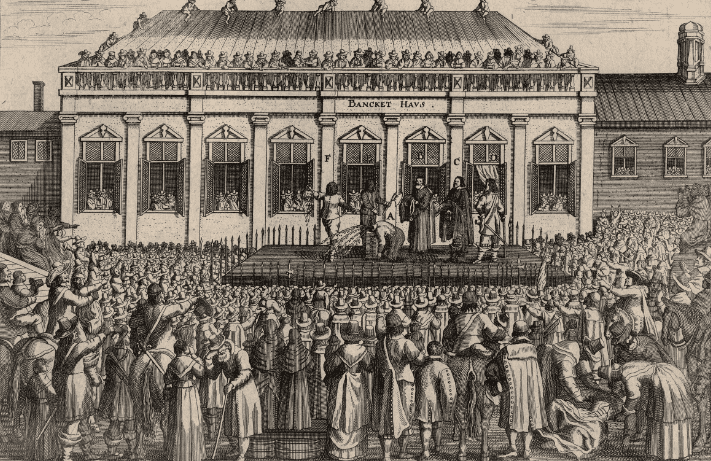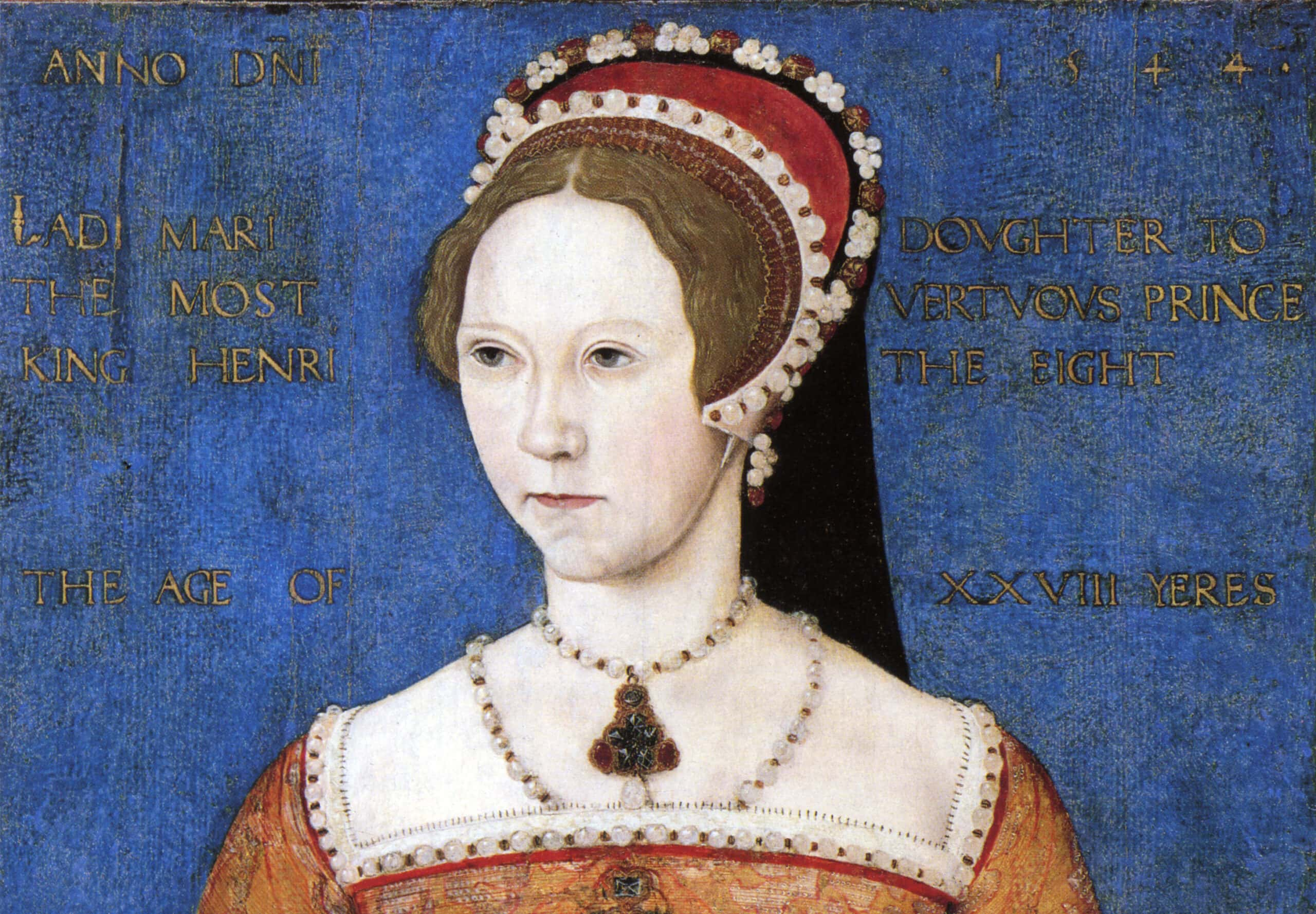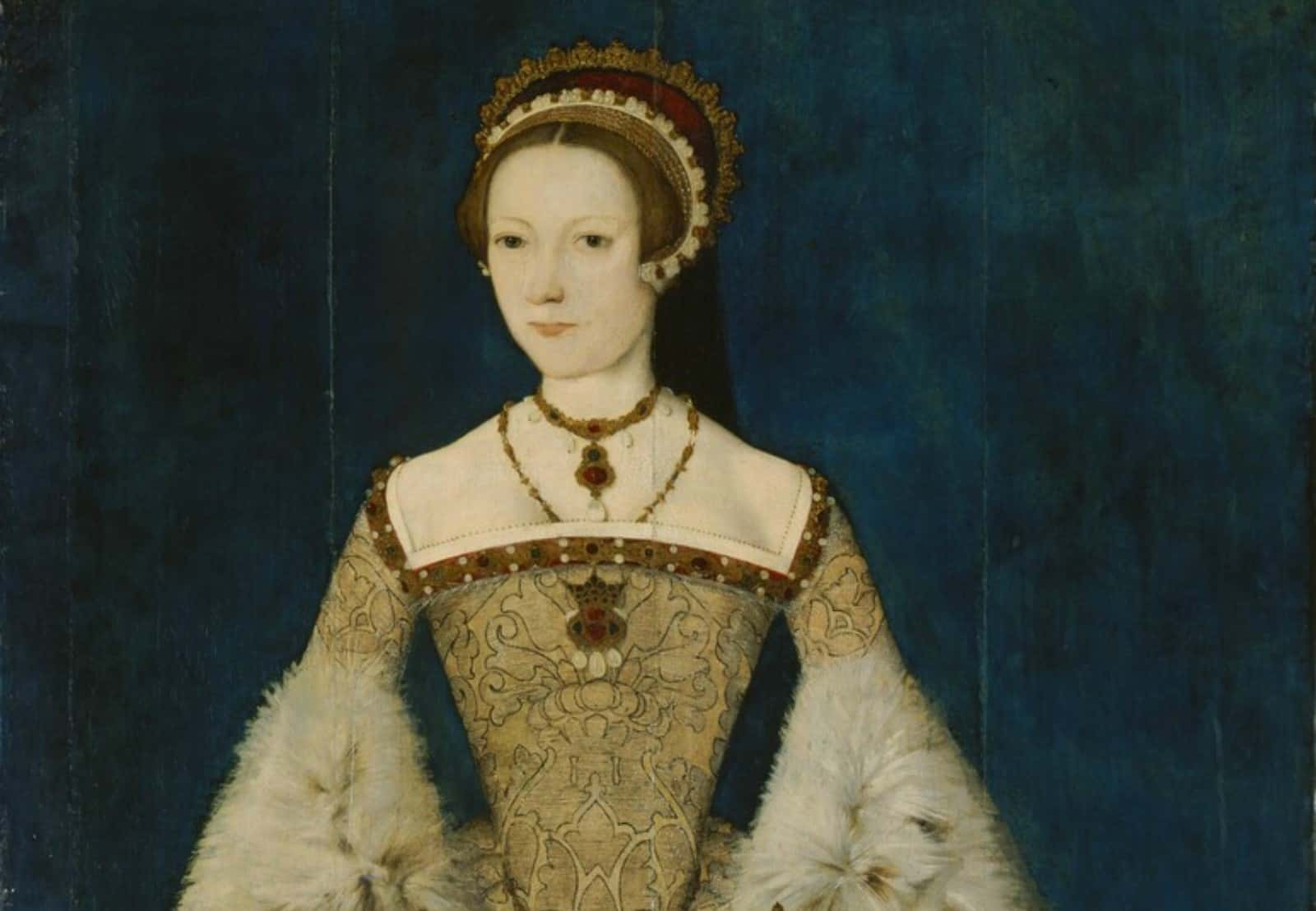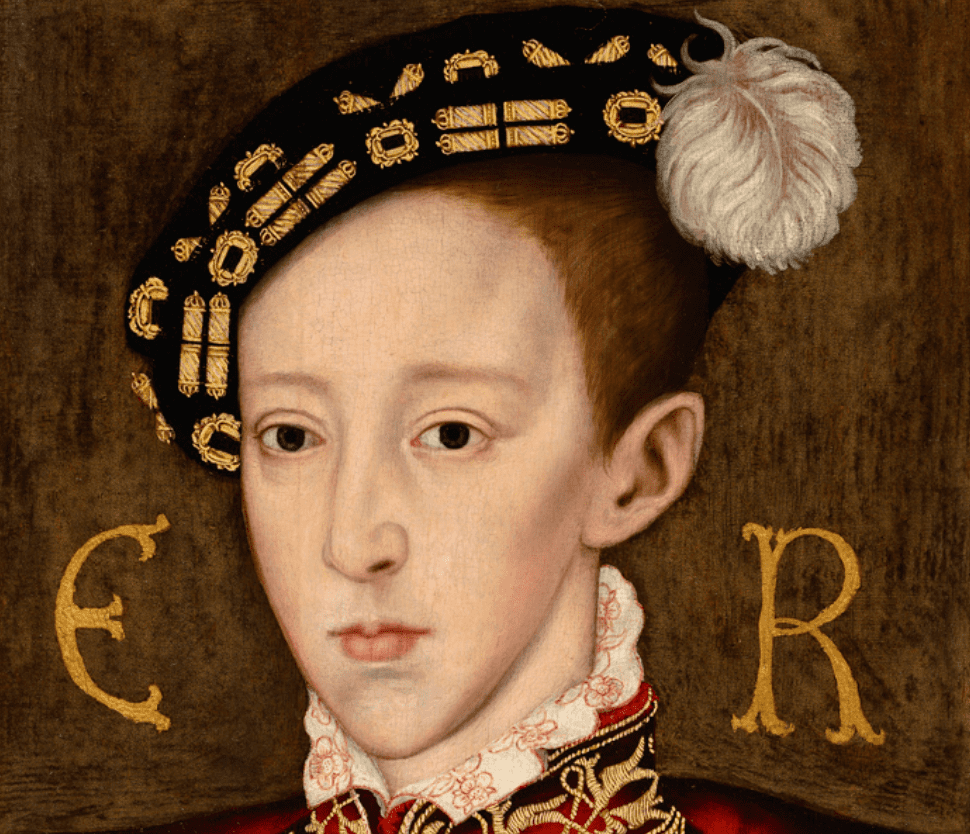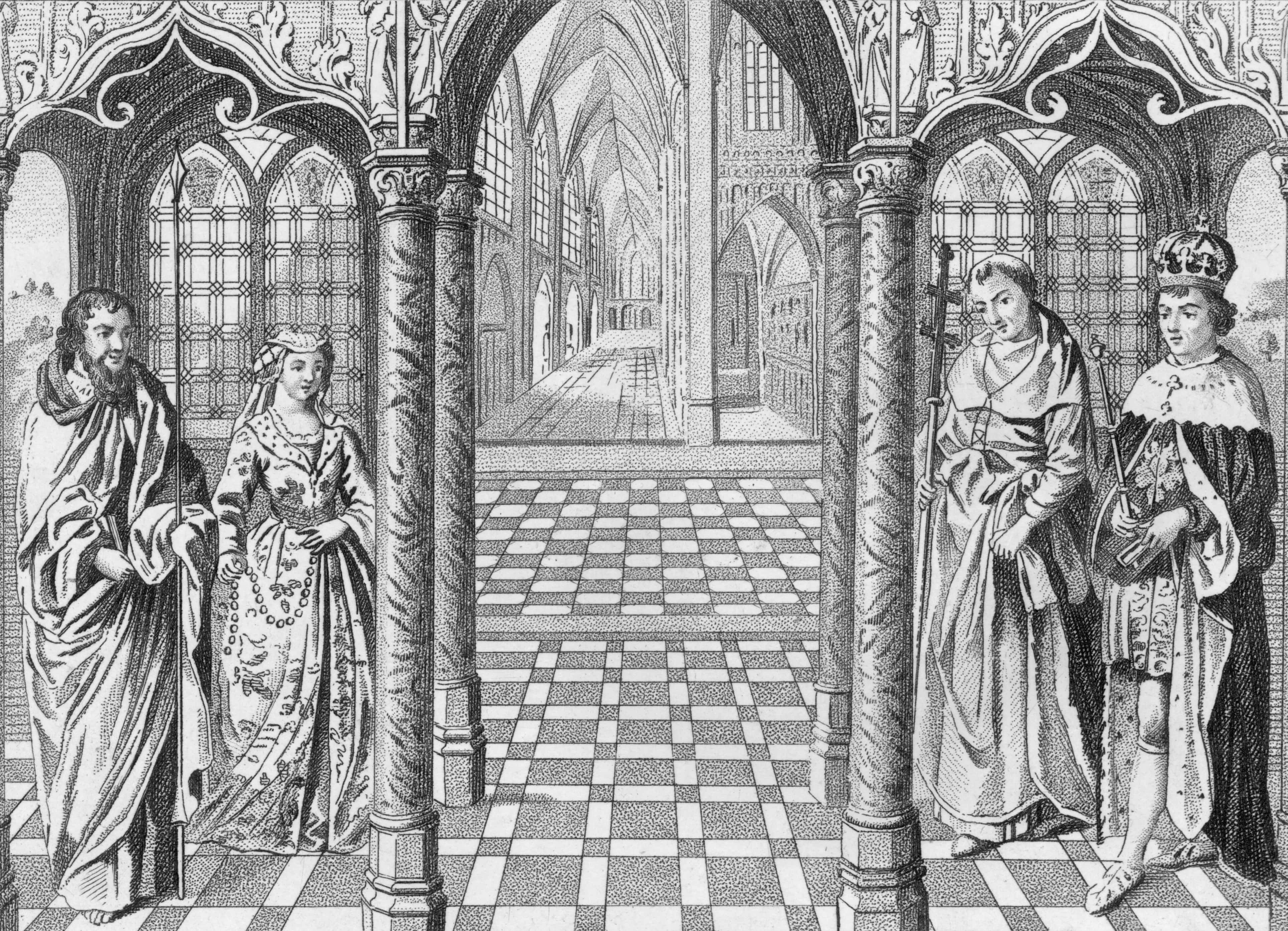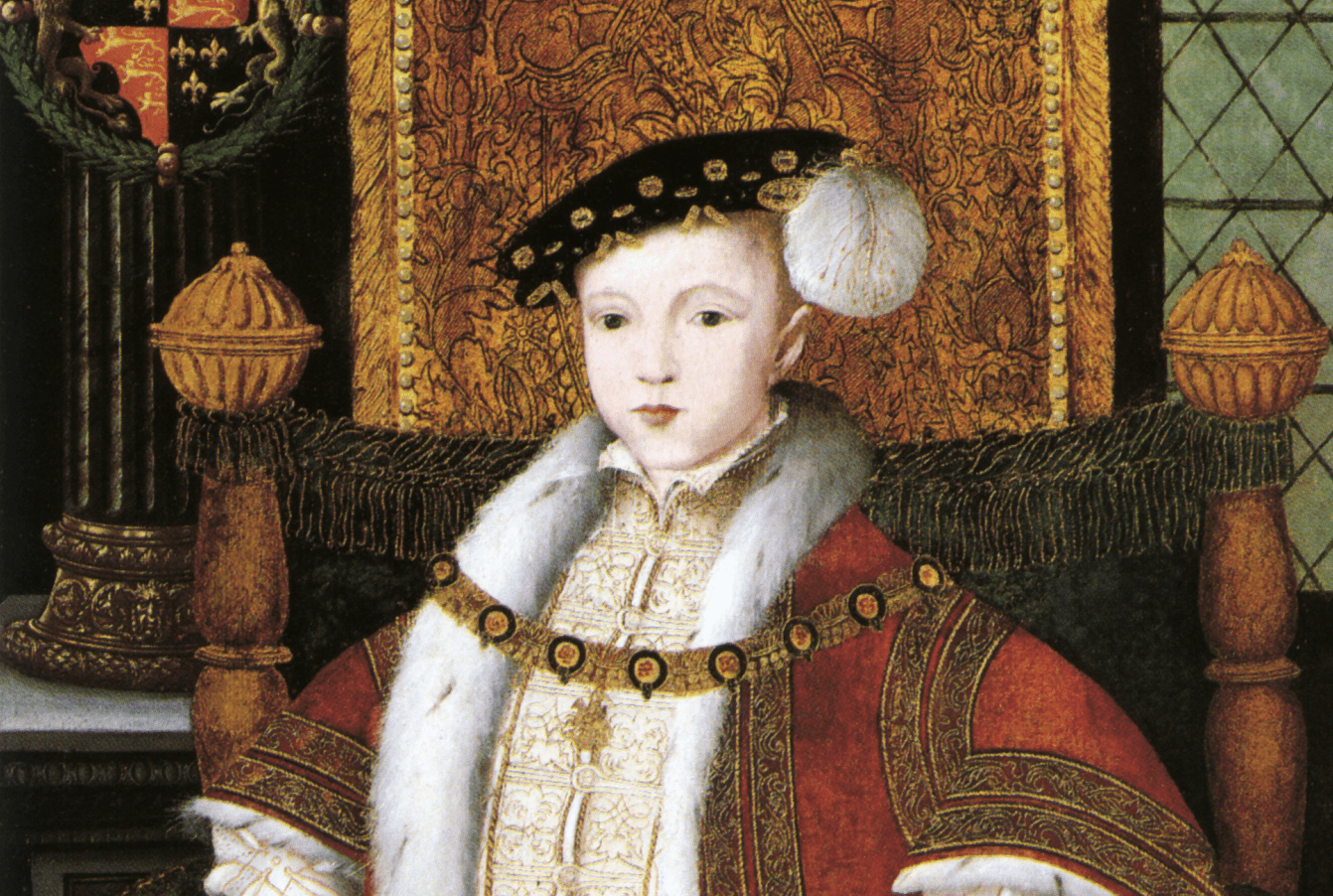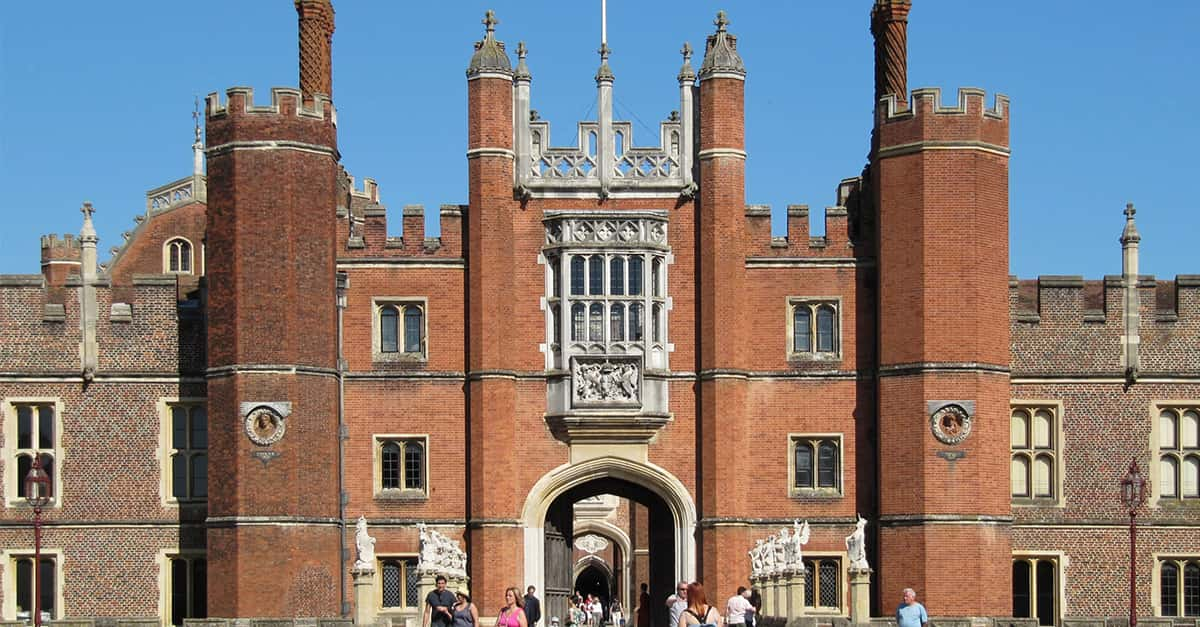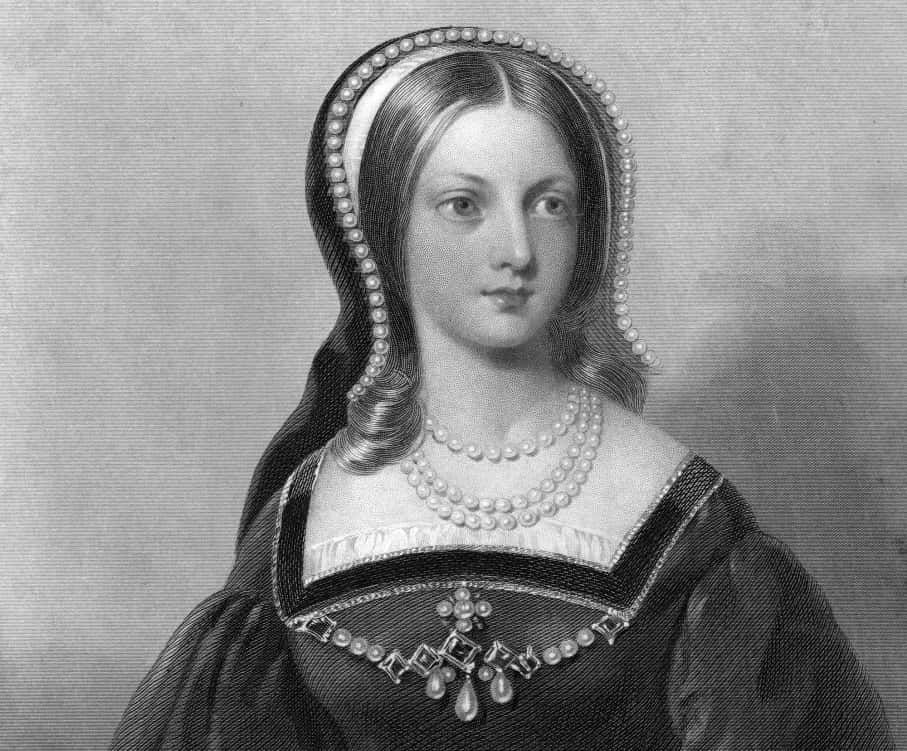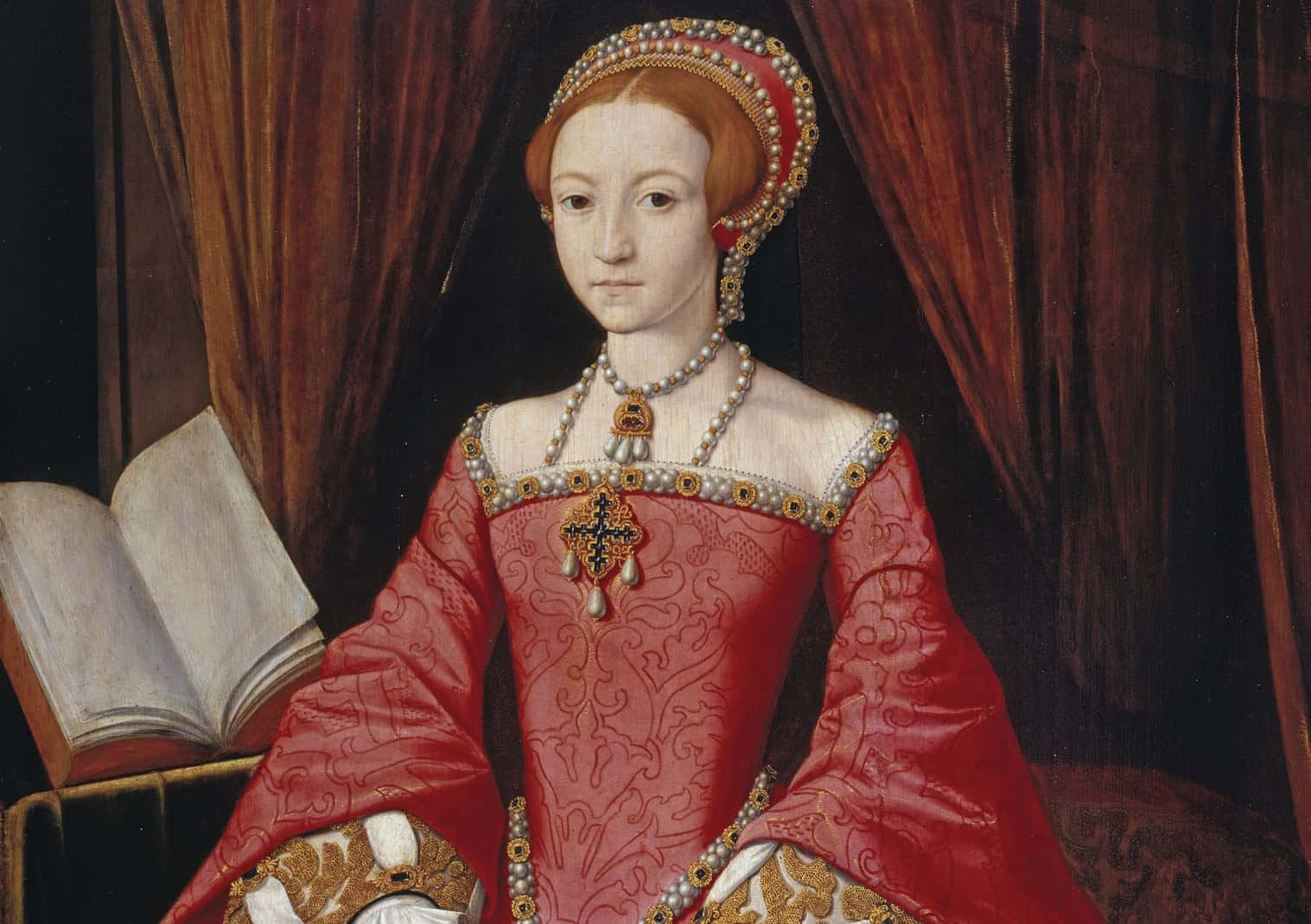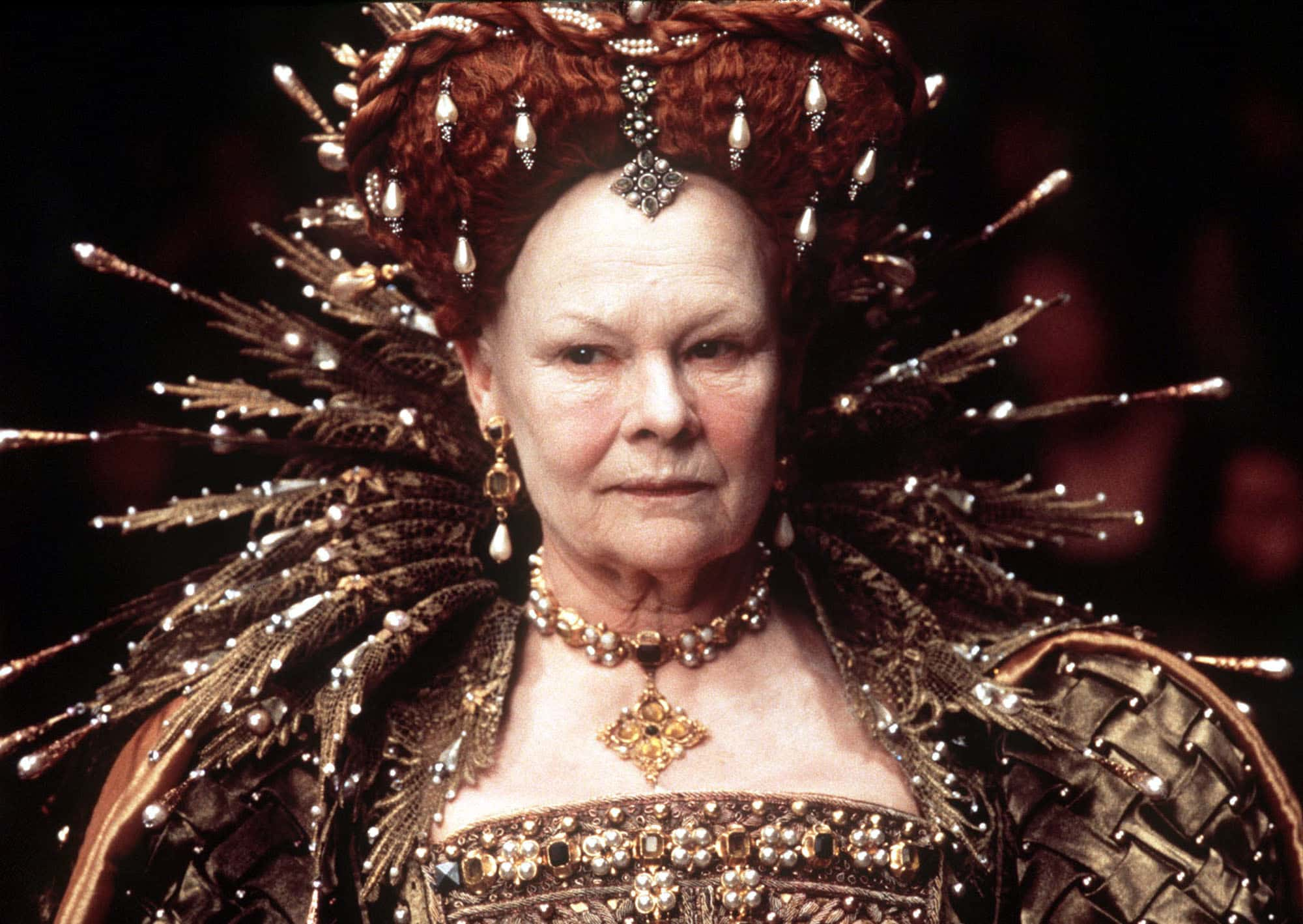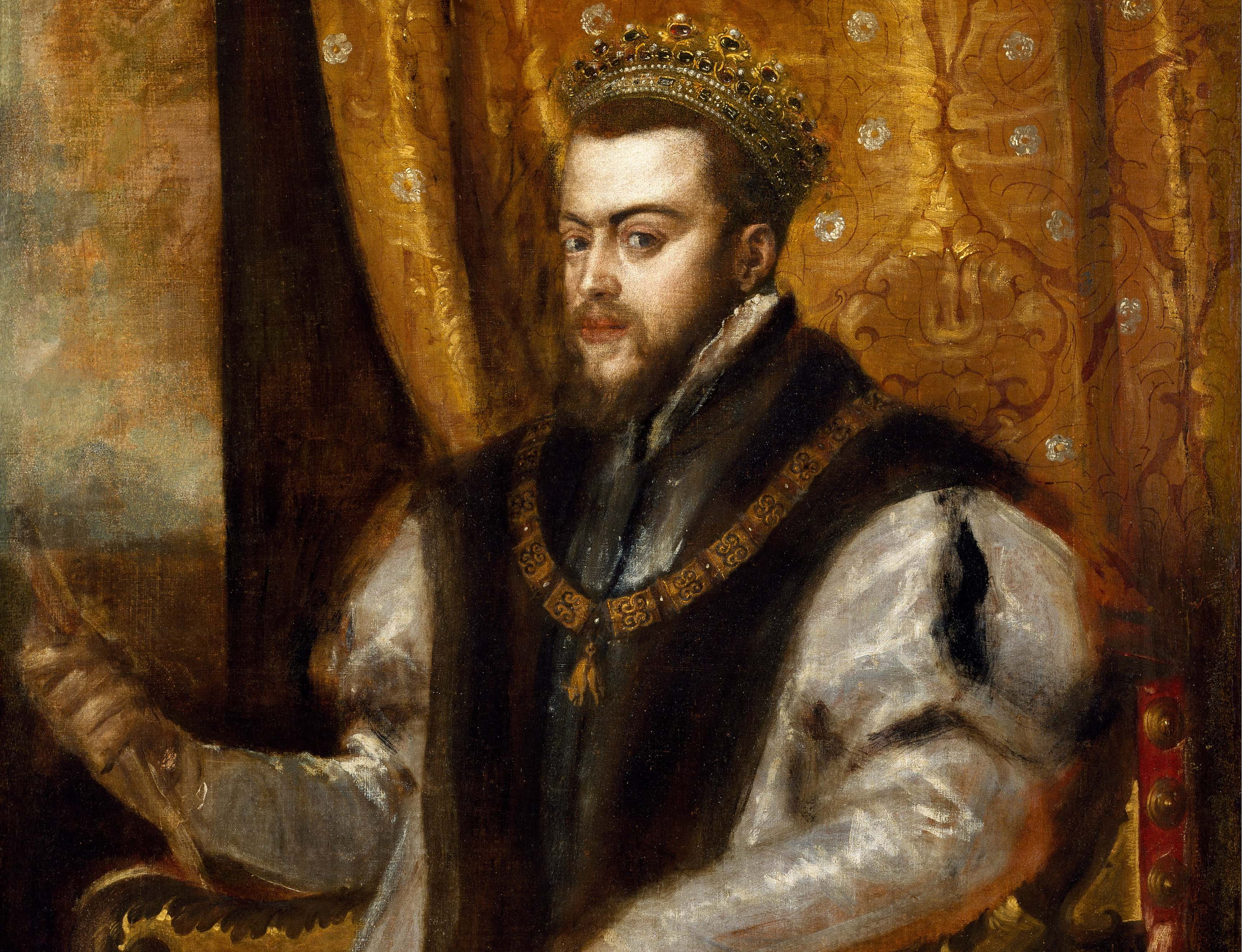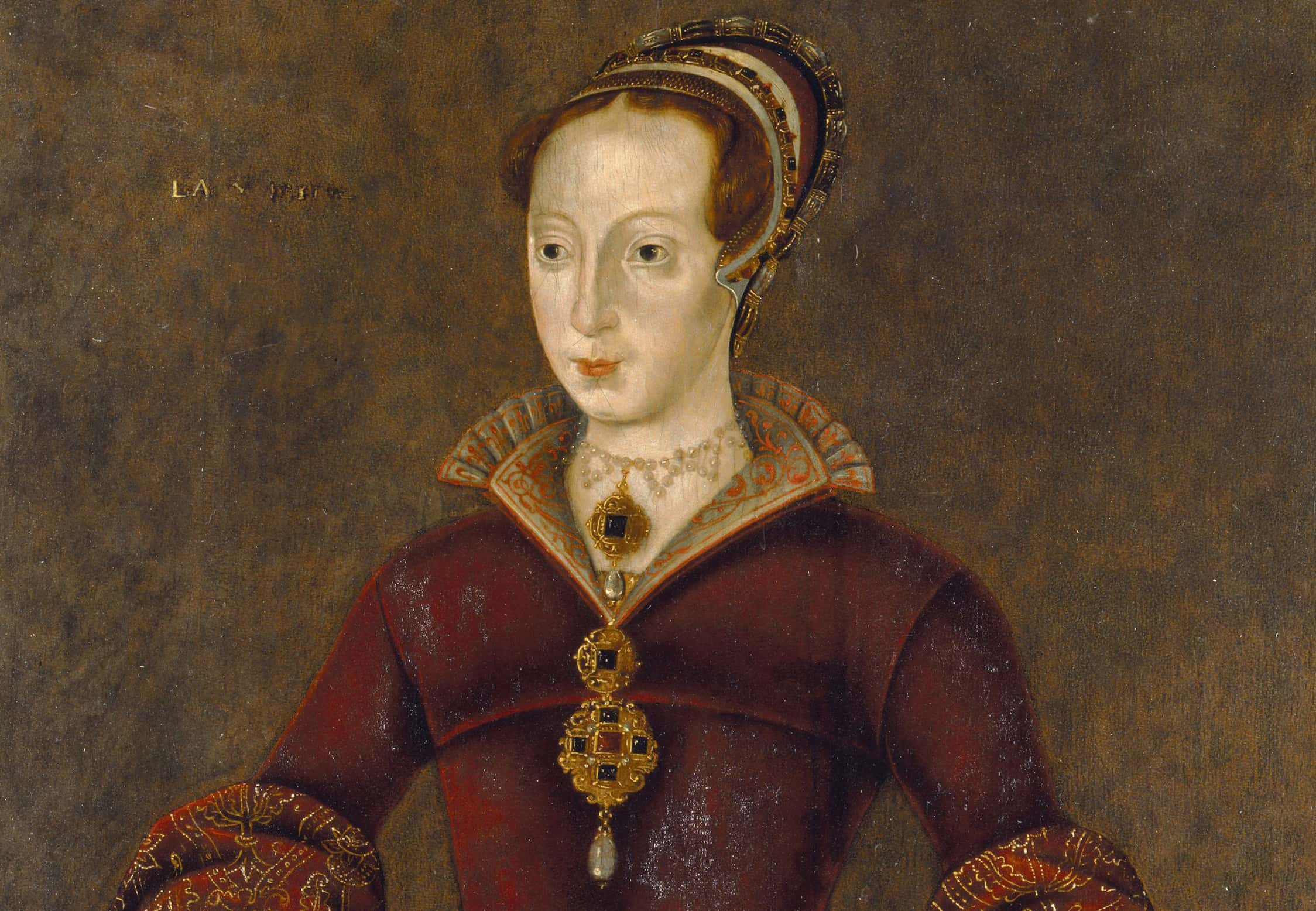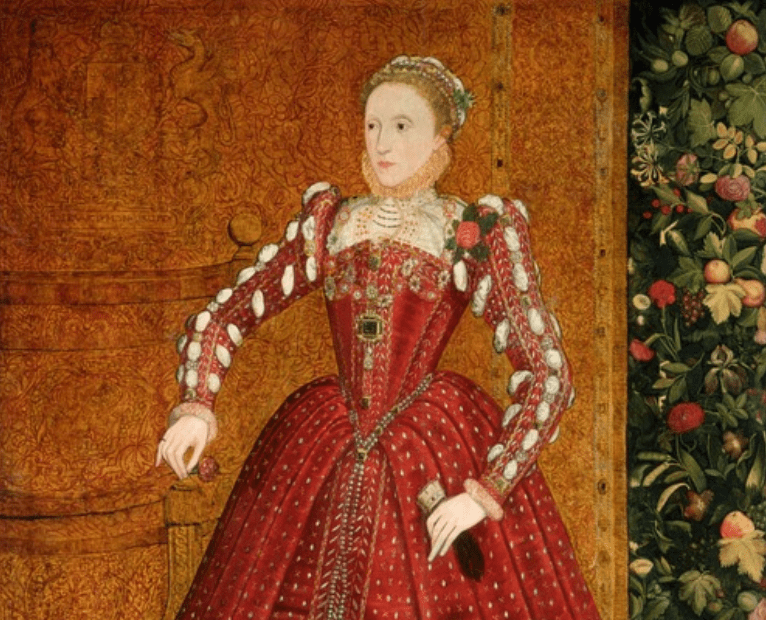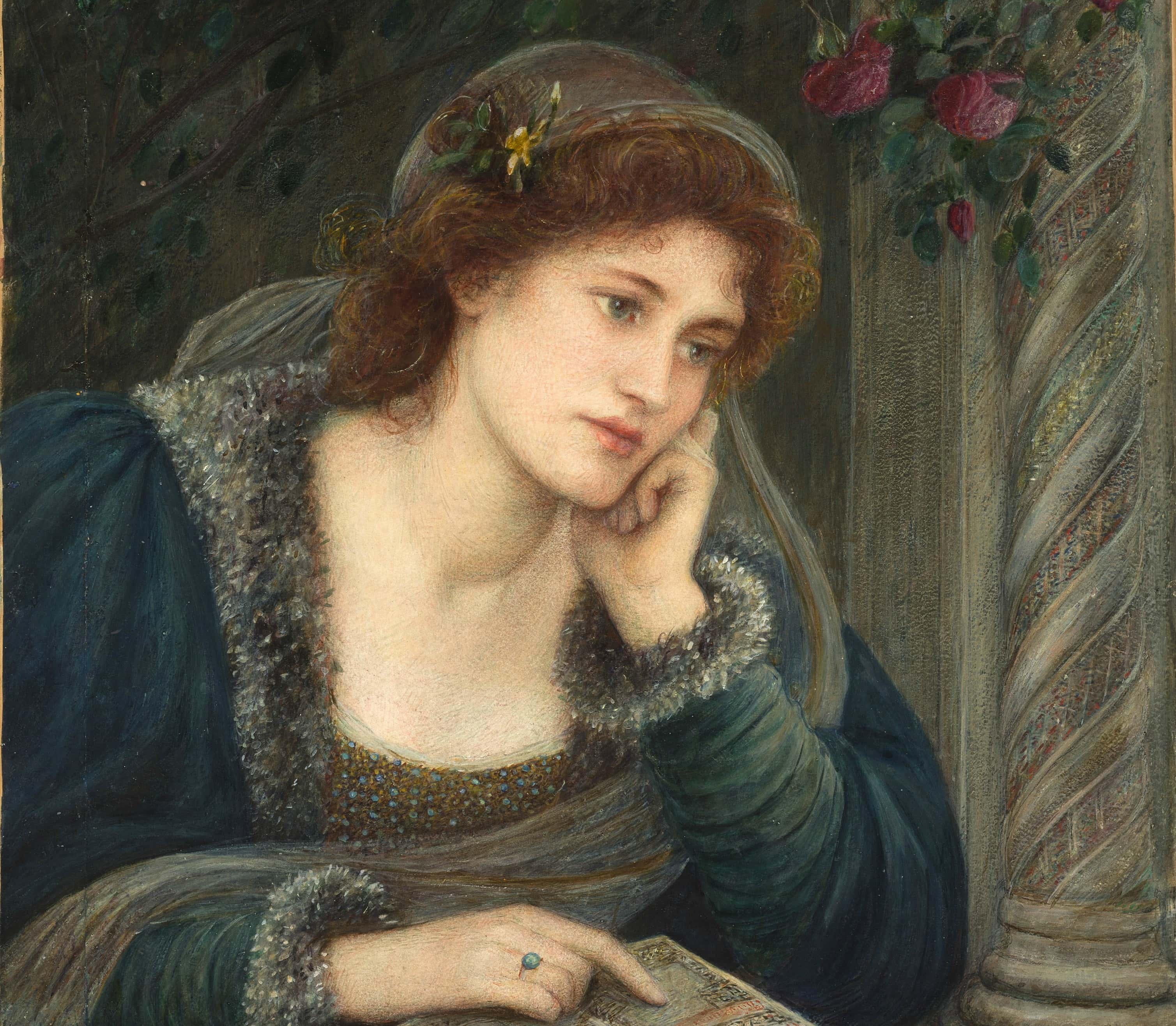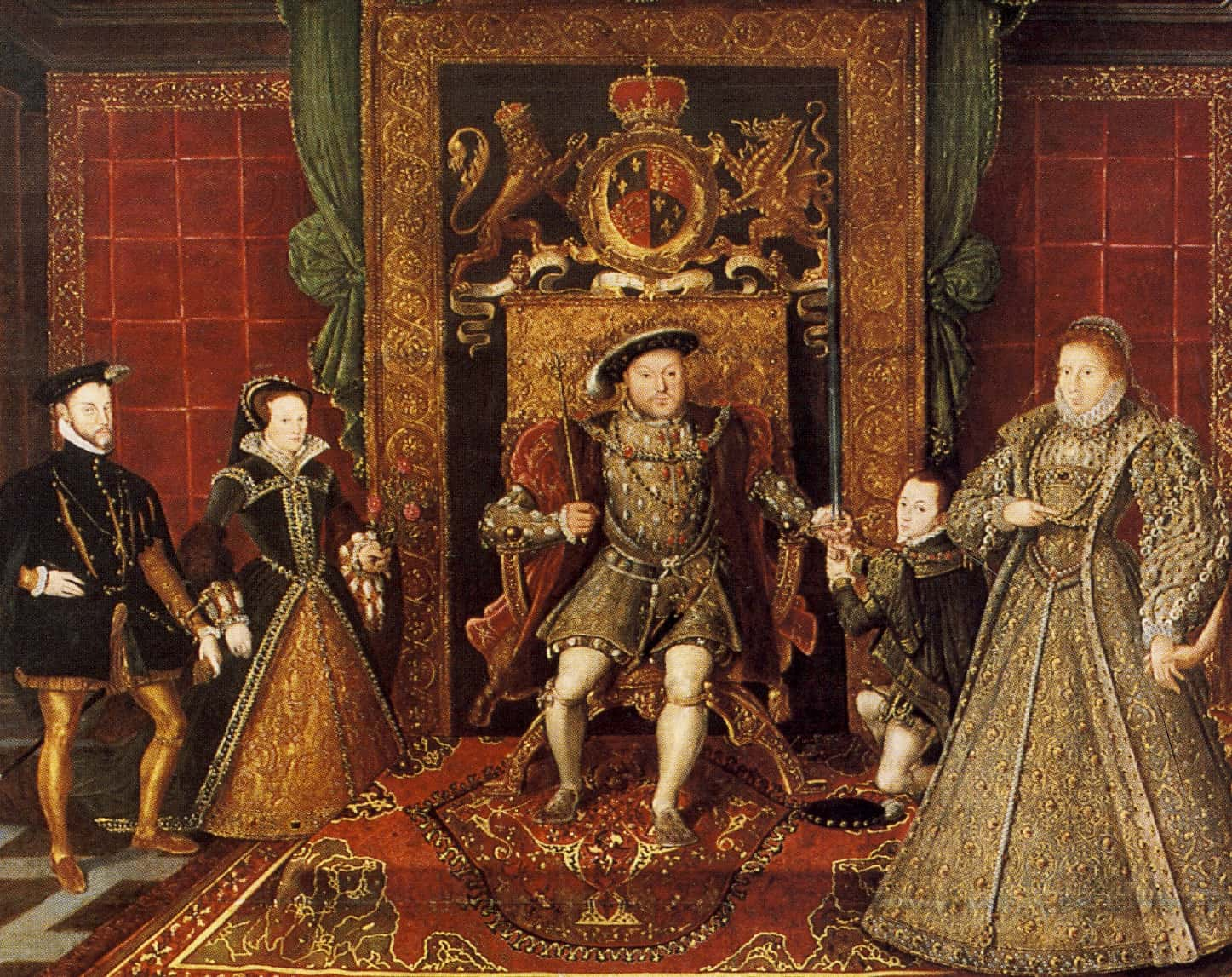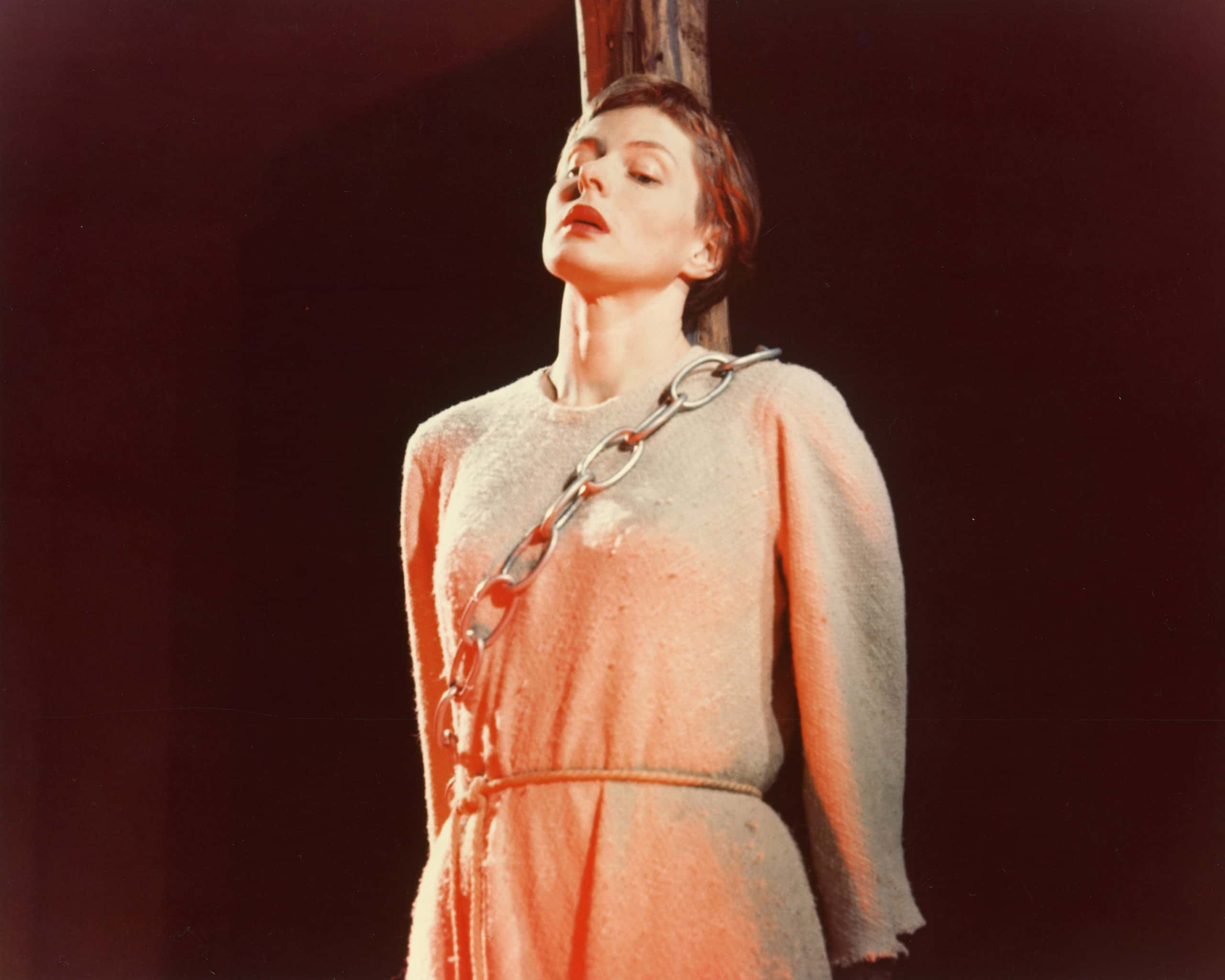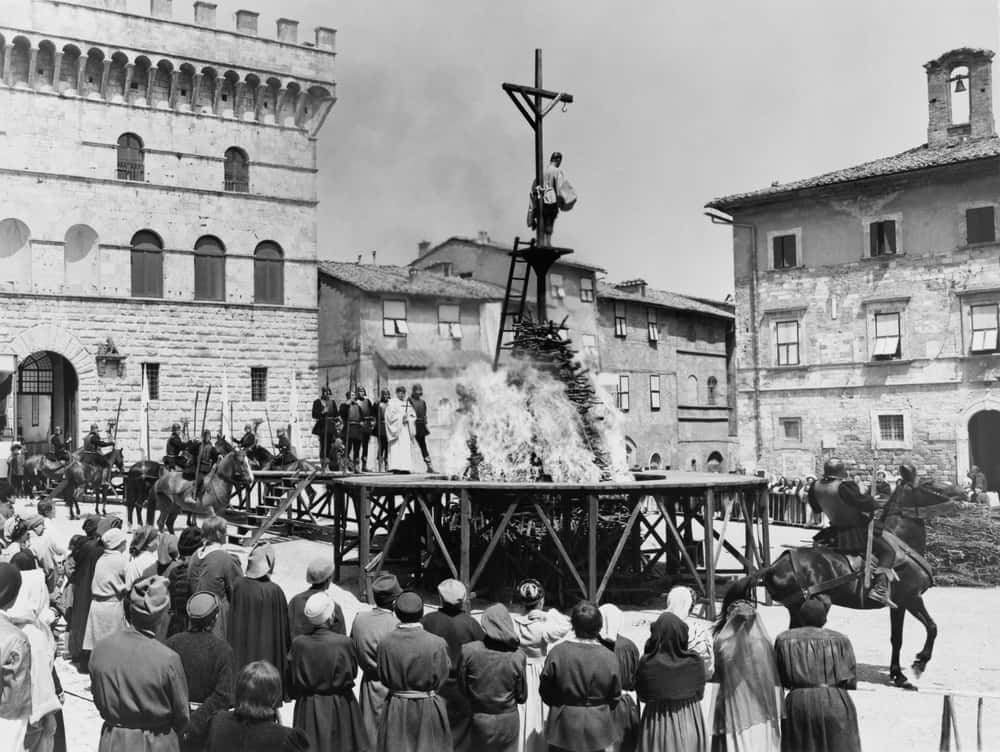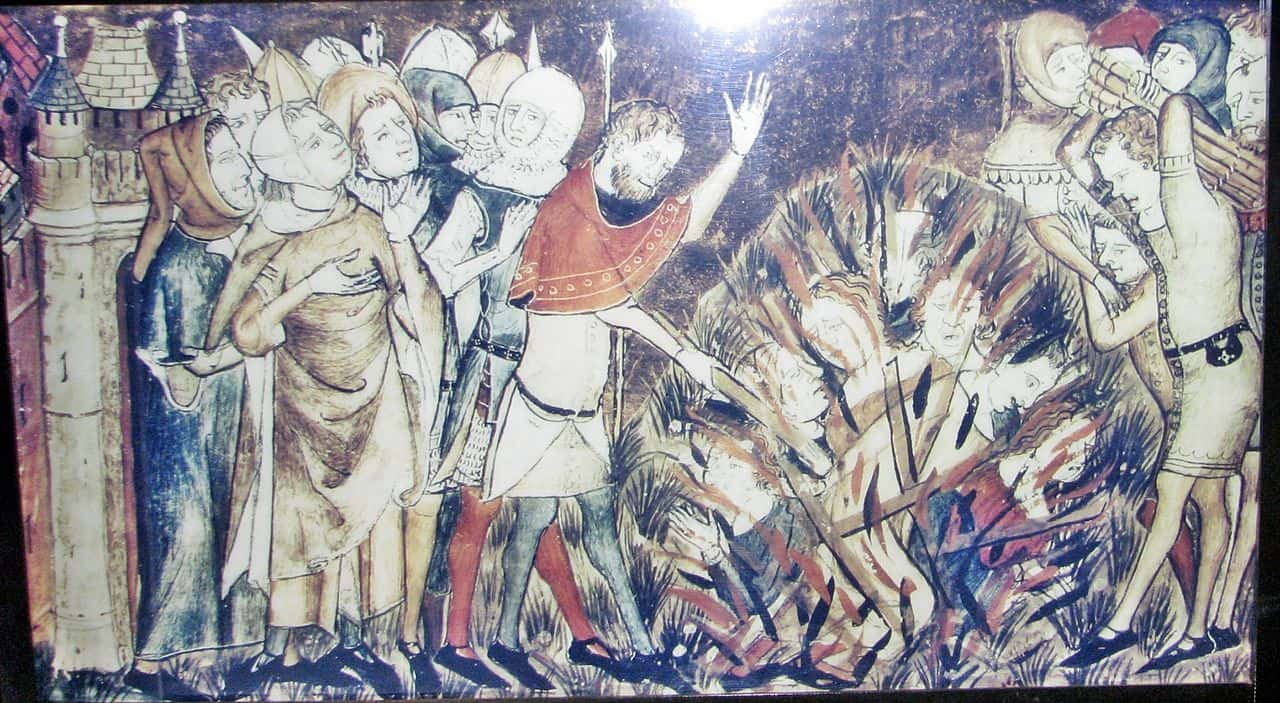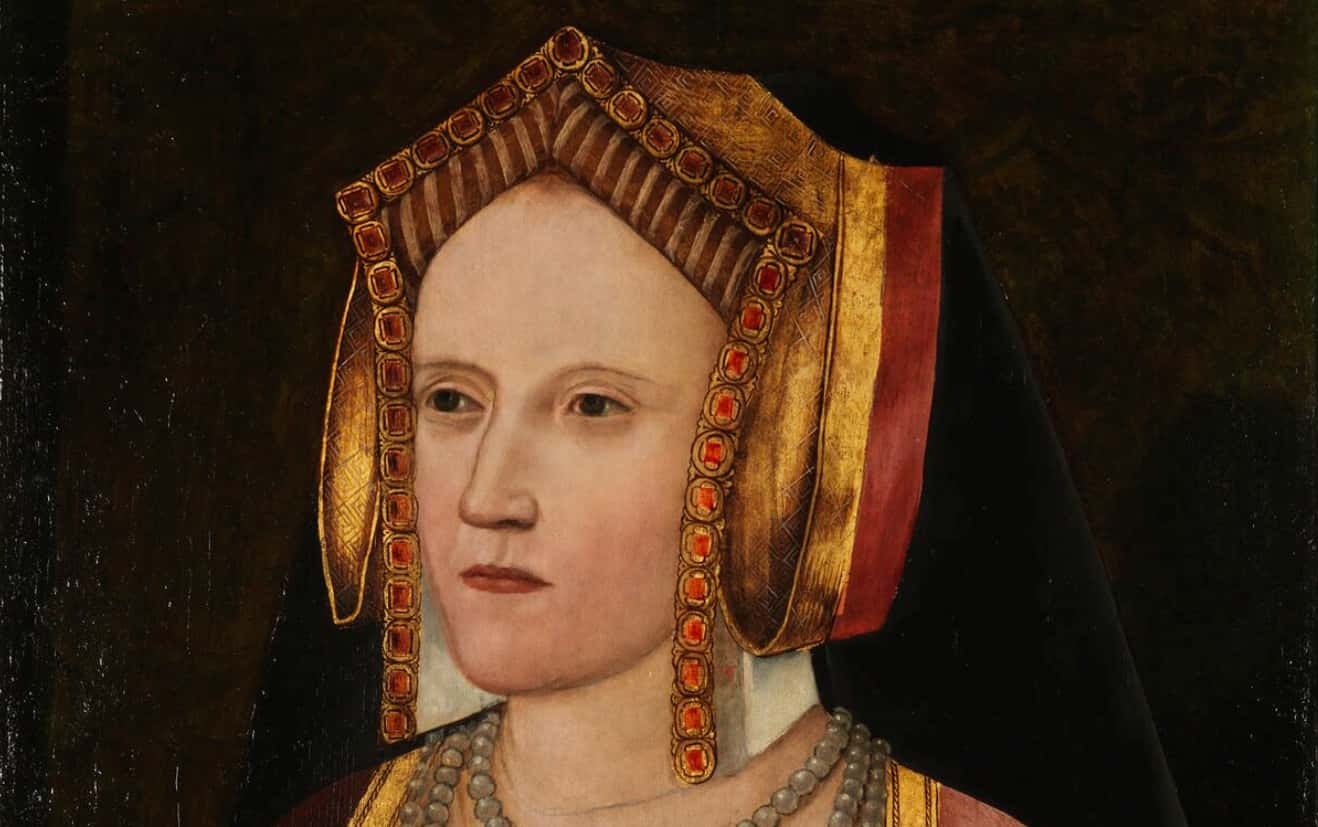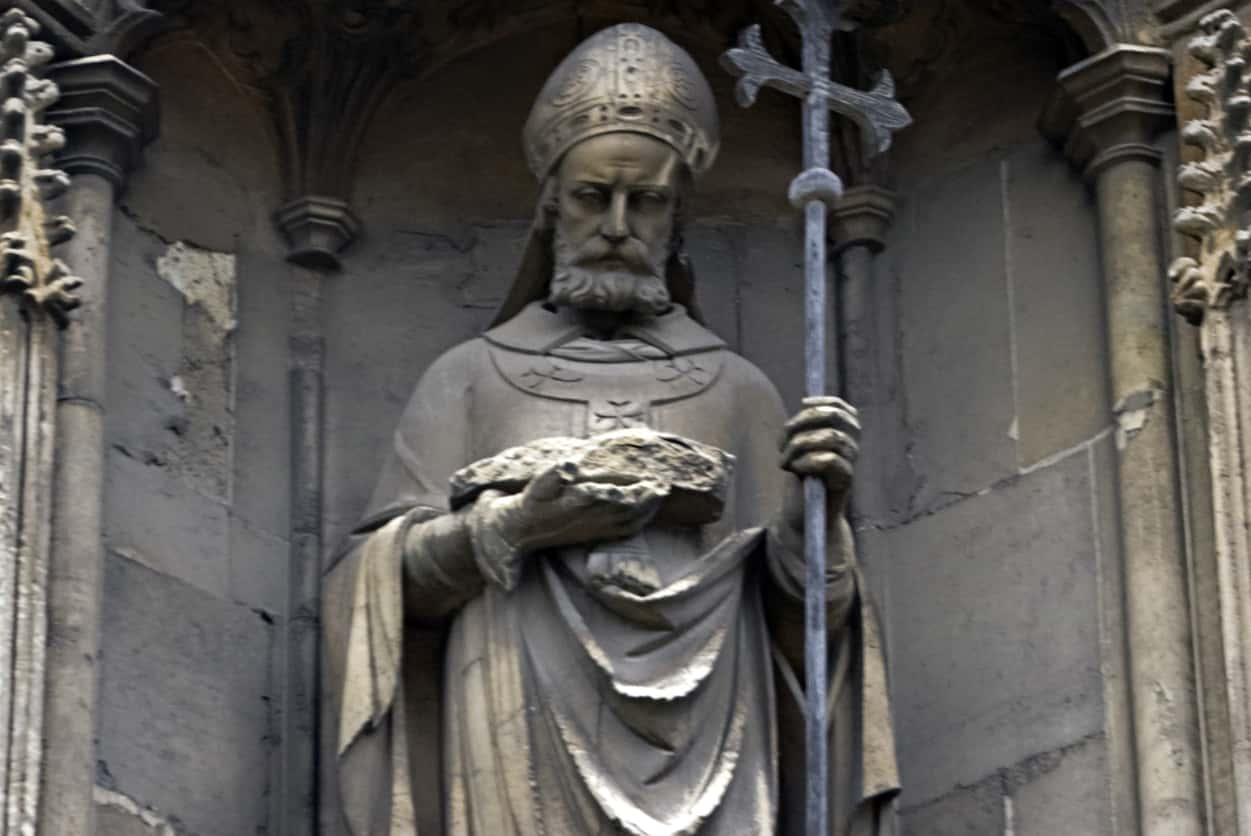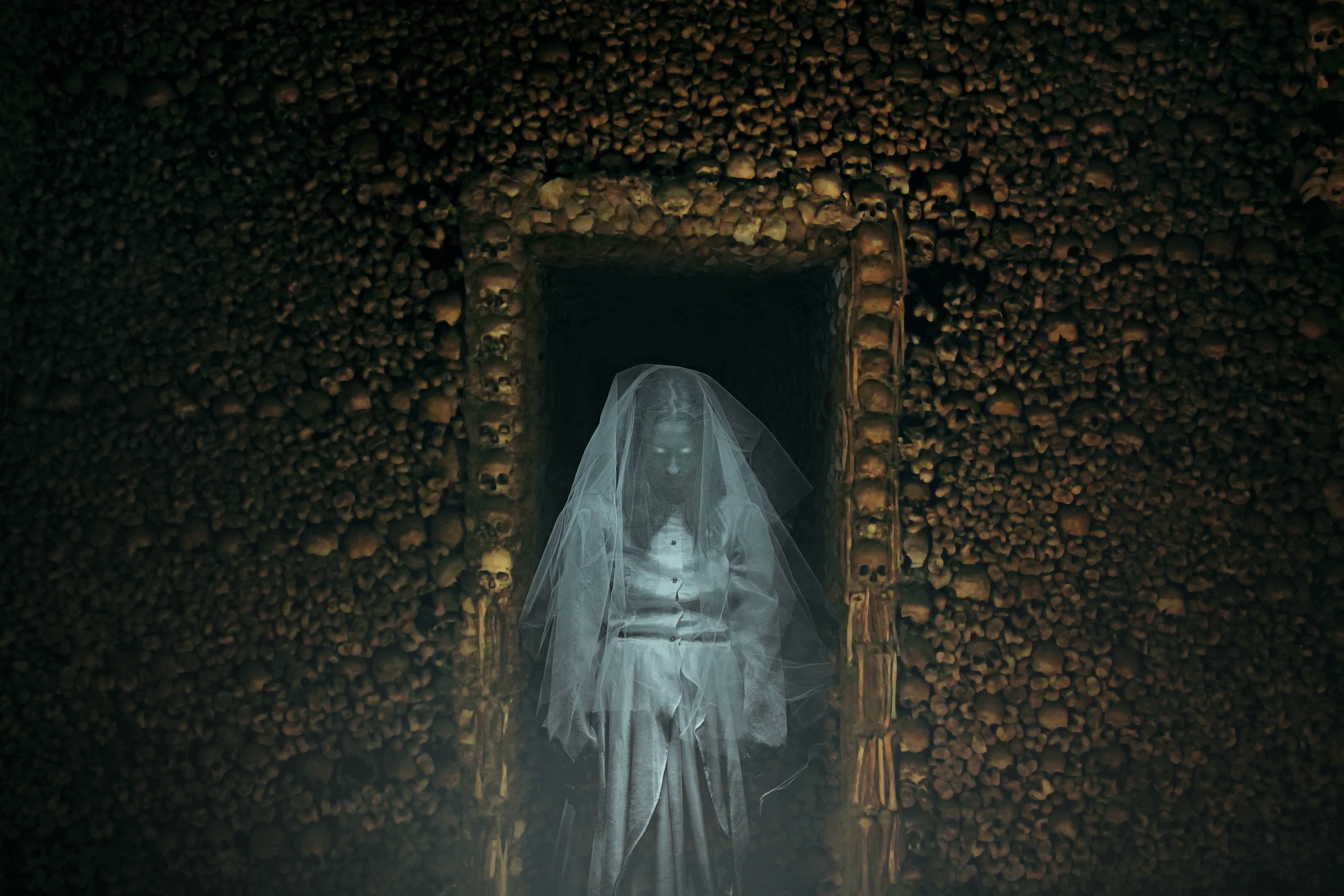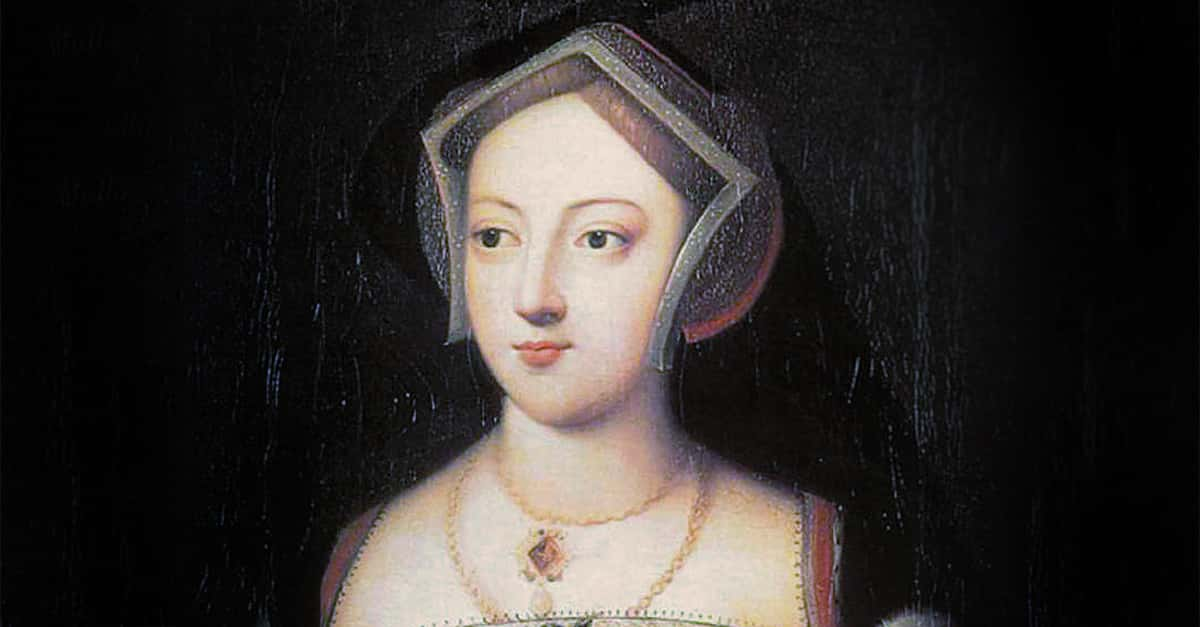Mary Tudor has gone down in history as the Catholic tyrant "Bloody Mary." There’s certainly cause for such a brutal nickname: she executed hundreds of Protestants during her short reign. But there’s so much more to Queen Mary's life than her ruthless reputation. From her deranged childhood to her chilling romances, this is the untold story of England's very first queen.
Queen Mary I Facts
1. Her Mother Suffered
It seemed like a miracle that Mary lived as long as she did. Her mother Queen Catherine of Aragon had an absolutely brutal time when it came to childbirth. Over the course of nine pregnancies, she suffered multiple miscarriages, had stillborn births, or watched her babies perish before their first birthdays. Because of all her pain, Catherine was thrilled when Mary survived into adulthood—but then again, she never saw her daughter's brutal reign.
2. Her Father Was Cruel
Catherine was happy to finally have a child survive for longer than a year, but her husband, King Henry VIII? Not so much. He needed a male heir and when he heard that Mary had been born, his response was utterly disturbing. He "consoled" Catherine by saying that since this one was a girl, it meant a better chance for a boy the next time. Thanks, dad.
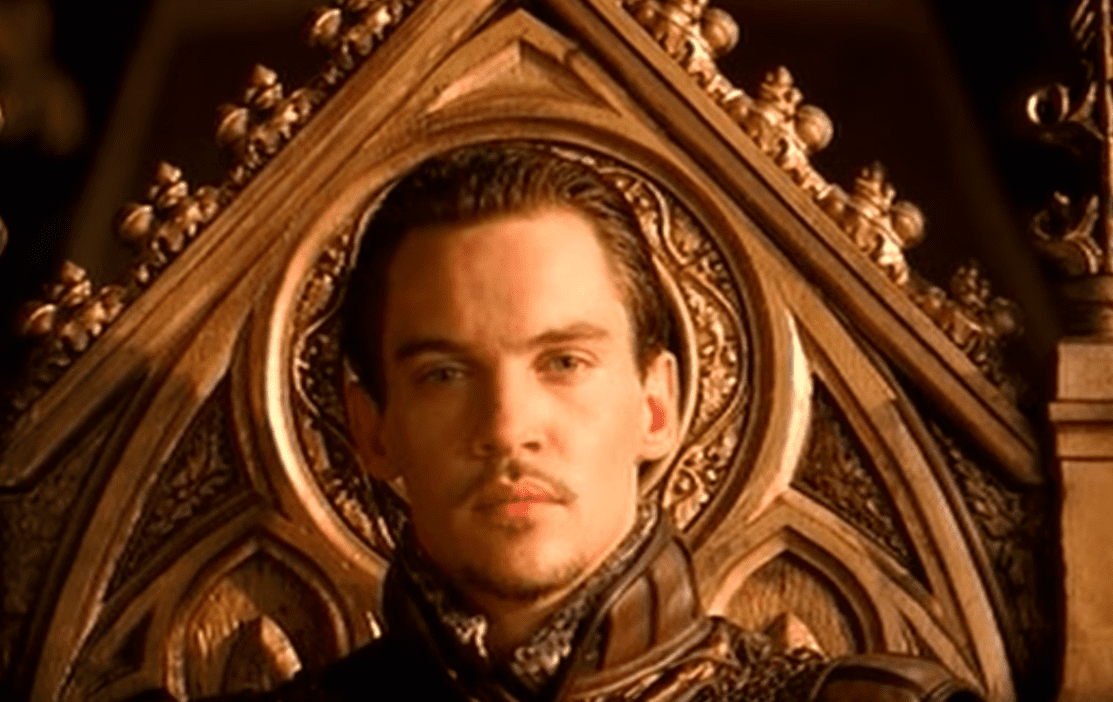 The Tudors (2007–2010), Showtime Networks
The Tudors (2007–2010), Showtime Networks
3. She Was Beautiful
Despite Mary's deranged childhood, she still managed to blossom into a precocious young beauty. She was cunning and clever, with a curvaceous figure, alabaster skin, light blue eyes, and vibrant red hair. As an attractive princess, she was always going to have men competing for her hand—but even she couldn't have predicted just how many...or how dark their intentions would be.
4. Her Dad Used Her
As Mary's dear old dad sat around waiting for a son, he figured he might as well use his daughter as way to forge alliances. At just two years old, he pledged Mary to the prince of France. Then when she was six, Mary was set to tie the knot with her own cousin. By the time she was a teenager, Mary already had been engaged to three different men.
5. Her Father Cheated
"Messy" doesn't begin to cover the rollercoaster relationship between Mary's mom and dad. Her father King Henry VIII needed a male heir and Catherine just couldn't give one to him. It also didn't help that Henry cheated on Catherine constantly—but even Henry's multiple affairs didn't hold a candle to the one betrayal that left Catherine and little Mary reeling.
6. Her Dad Was Deranged
Watching your parents split up is hard—but for Mary, her parents' break-up literally made history. When Henry fell in love with coy Anne Boleyn, he moved heaven and earth to be with her. At the time, divorce was a big no no, but Henry just couldn't wait to shack up with his new mistress. While he pressured the church to let him dump Mary's mom, Henry banished Catherine to a faraway fort.
7. Nothing Was Enough
As a princess, Mary received an extensive education. She learned to play the harpsichord and as early as age nine, Mary could read and write in Latin. But nothing Mary did could win over her dad. During his messy split from Mary's mom, Henry lashed out with a brutal act. He cruelly refused to let Mary see or even talk to her mother.
8. She Suffered from Depression
Growing pains have nothing on Mary's brutal adolescence. Even though she frequently suffered from painful illnesses and begged her dad to let her visit her mom, Henry coldly refused. Between her physical and emotional anguish, Mary quickly fell into a deep depression. And then, things got even worse.
 The Spanish Princess (2019– ), All3 Media
The Spanish Princess (2019– ), All3 Media
9. Her Parents Had a Scandalous Divorce
In 1533, Mary's parents officially broke up—and oh, what a break-up it was. A mere five days after getting the church to let him dump Catherine, Henry walked down the aisle with his side-piece Anne Boleyn. With his new bride by his side, Henry then twisted the knife: He declared Mary illegitimate and demoted her from a princess to a lady. Ouch.

Sign up to our newsletter.
History’s most fascinating stories and darkest secrets, delivered to your inbox daily. Making distraction rewarding since 2017.
10. She Was Passed Over
Mary was no longer in line for the throne—instead, that honor went to her dad's new favorite daughter: little Princess Elizabeth, Henry's baby with Anne Boleyn. To say that Mary was ticked would be a huge understatement: She was furious. Mary refused to treat her new step-mom and step-sister like they were her superiors. In retaliation, Henry made his daughter's life a waking nightmare.
11. She Had a Mysterious Illness
Mary was constantly sick, but instead of, I don't know, letting her talk to her mom, Henry forced her to stay home and tough it out. Surprise, surprise: That approach didn't work. Instead, it just made Mary even angrier with her dad. In fact, for three full years, Mary did not speak to her own father.
12. Her Father Pressured Her
For King Henry, it seems that even this level of father-daughter drama wasn't enough. He couldn't tolerate Mary's cold treatment of his new wife and baby, so he did what any deranged dad would do. First he tried to manipulate Mary, then he attempted to bribe her. Even under pressure, Mary stood up to the king and refused to bend to his will.
 The Tudors (2007–2010), Showtime Networks
The Tudors (2007–2010), Showtime Networks
13. She Was Locked Up
This time of Mary's life was deeply unhappy. Henry was trying to break his daughter's disobedient streak by depriving her of, well, everything. He took away her jewels, disbanded her household, and wouldn't even let her go on walks. There was one bright spot in Mary's misery: Her mother. The two secretly corresponded through letters. Sadly, even this consolation wouldn't last for long.
14. She Had a Breakdown
Through all of this turmoil, Mary did her best to roll with the punches—until one event changed everything. In 1536, Mary's beloved mother breathed her last. With this loss, Mary became absolutely "inconsolable." She shut herself away in a remote estate so that she could grieve in private.
 The Tudors (2007–2010), Showtime Networks
The Tudors (2007–2010), Showtime Networks
15. She Suffered Loss After Loss
1536 was a dramatic year, even for Mary. After saying goodbye to her mother, Mary also bid adieu to her step-mom. It turned out that Anne Boleyn couldn't give Henry a male heir either, so he dispatched of her in a way that made Catherine's banishment look like a happy ending: Henry had his second wife beheaded and declared baby Elizabeth to be illegitimate. Luckily for Mary, this meant that she was back in the royal game.
16. The Good Times Didn't Last
Mary's dad didn't seem to believe in taking a breath between relationships, so soon enough, he tied the knot with his third wife Jane Seymour. Thankfully, she and Mary got along much better than Henry's last bride. Jane and Mary were fast friends, and Jane even made Mary the god-mother of her newborn son. It looked like Mary's patchwork family was finally gelling—only for disaster to strike.
17. Her Family Life Was Tragic
Shortly after Mary's new step-mom gave birth to her baby boy, everything went terribly wrong. Jane's labor had been utterly horrible and after clinging to life for two weeks, she breathed her last. Mary had just found a mother-figure—only to lose her. As a sign of Mary's devotion, she held the role of "chief mourner" at her step-mother's funeral.
18. She Saw Terrible Things
To be honest, though, dying of complications from childbirth was a much better fate than most people suffered in King Henry's court. When Henry got mad at Mary's beloved godmother and old teacher, he had her executed. Even worse, the person wielding the axe was an inexperienced young man who, and I quote, "literally hacked her head and shoulders to pieces." Poor Mary had to watch as her old friend and mentor suffered an utterly brutal fate.
19. She Defied Her Father
With Anne Boleyn out of the picture, Mary's relationship with her father was finally on the mend—but there was still one problem. Mary refused to say that her parents' marriage was invalid or admit that Henry was right to leave her mother. Furious at Mary's defiance, Henry locked his daughter in a room and kept her there until she finally gave in. Talk about father/daughter issues...
20. She Was a Catch
Even as Mary watched her maternal figures drop like flies and dealt with, y'know, being held captive by her dad, she still had to fulfill her royal duties—and when you were a woman that meant one thing: Marrying a rich guy. Bavaria's handsome Duke Philip made advances, as did Germany's Duke of Cleves, but both flirtations came to nothing. After all, Mary had her eye on something bigger: She wanted the crown.
21. Her Dad Could Be Monstrous
Over the next few years, Mary's experiences only confirmed that power was fickle and her father was not a man to be messed with. She watched as Henry cruelly annulled his fourth marriage, then looked on as he put his fifth wife to death. By the time Mary met her final step-mom, Catherine Parr, she had very low expectations for any of her father's brides. Parr would prove her wrong, but the pleasant surprise would come at a heartbreakingly high cost.
22. Her Family Splintered
Mary's final step-mother turned out to be her favorite. She became very close with Parr, bonding with her new step-mom over games of cards and matches of chess. Finally, Mary's home life was stable, but the peace wouldn't last long. In 1547, her father took his last breaths. With this loss, Mary, along with the rest of England, entered an era of profound uncertainty.
23. Her Brother Took Control
With Henry out of the picture, his nine-year-old son became King Edward VI took the throne. Spoiler: Making a pre-teen king was not a good call. Edward's rule was a bloody mess, full of riots, rebellions, and revolts, both in and out of the court. At home, Edward and Mary feuded constantly over their different beliefs. She was a Catholic, he was a Protestant—and both of them refused to back down.
24. She Defied the King
Another princess would have given in and converted to the court's religion, but not Mary. She insisted on attending Catholic services in her own private chapel and then made it her personal mini-mission to get other courtiers to see the light. She invited people to hear Mass with her and, lo and behold, the illicit services became popular. The young king watched, furious, as his half-sister defied him—and then he lashed out.
25. She Had a Dark Feud
Edward ordered Mary to stop her masses and even banned her from holding private services. The siblings' feud hit fever pitch when Mary got into a shouting match with the king...in front of the entire court. It was a huge scandal, and things only got more dramatic when courtiers discovered Mary in the midst of a forbidden act.
26. She Tried to Escape
By this point, Mary was at her wits' end. She'd literally rather run away than give in and become a Protestant—and so she did just that. Courtiers caught the princess as she tried to escape from the castle, which now felt more like a prison cell. After forcing Mary back into her chambers, it looked like the feud between the princess and the king was finally at its breaking point—and then suddenly, everything changed.
27. She Fought for Power
On July 6, 1553, after feeling ill for a few months, King Edward VI passed on. He was just 15 years old when he breathed his last. With Edward's demise, England plunged into another period of uncertainty. A series of combatants fought for his throne, with Mary leading the pack. She was ready to reign—but if she wanted the crown, she'd have to fight for it.
28. She Was Betrayed
Even though Mary was the rightful heir, a complex plot kept her from taking power. An ambitious duke saw Edward's demise as a way to put his relative Lady Jane Grey on the throne. As Edward declined, he convinced the king to change his successor to Lady Grey—and keep Mary on the sidelines. This was, to put it lightly, a very bad idea.
29. She Defeated Her Foes
Lady Jane infamously held the title of Queen for a mere nine days. She lost the crown on July 12, 1553, when Mary gathered her forces and stormed the castle to seize power from her rival. Mary handily defeated Lady Jane Grey and locked her up in the infamous Tower of London. Then she, along with her half-sister Elizabeth, took a victory lap. It was a rare moment of joy in Mary's incredibly turbulent, dark life.
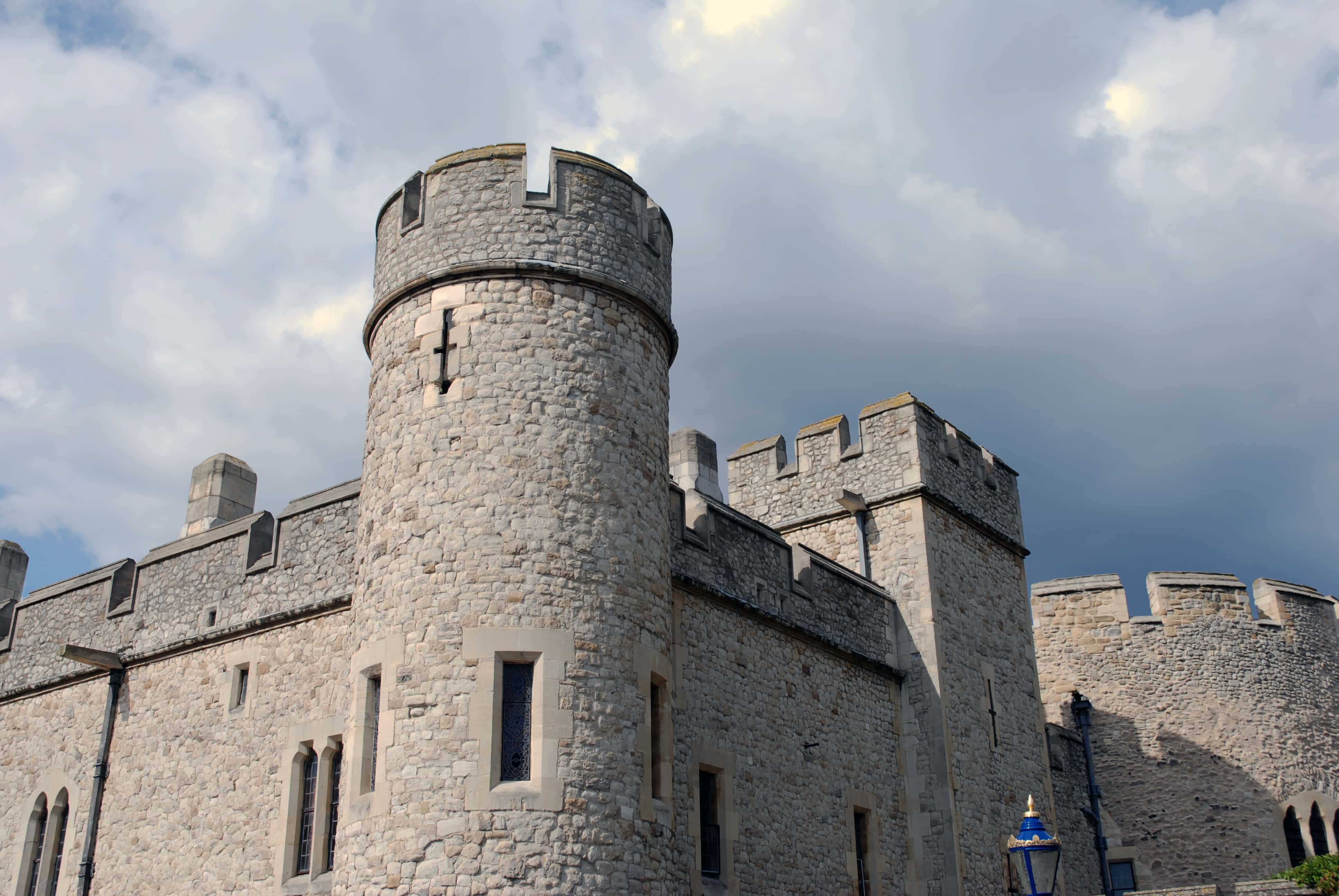 Wikimedia Commons, allen watkin
Wikimedia Commons, allen watkin
30. She Tried to be Merciful
Here's the thing: Lady Jane wasn't actually interested in power. She was just a political pawn, and Mary knew it. That's why, even when Jane was found guilty of treason, Mary tried to be merciful. She kept her under guard at the Tower to avoid executing her—but as we'll see, when the English people wanted blood, eventually, they'd get it.
31. Her Victory Was Short-Lived
Even though Mary and Elizabeth rode through town together after locking up Jane Grey, the sisters were far from BFFs. Mary knew that if Elizabeth could seize power, she would take the chance—and so Mary decided to stop her in her tracks. In 1554, the newly-crowned queen set her eyes on her next coup: Finding a husband. Mary knew that if she could birth a legitimate heir, it would be much harder for Elizabeth to dethrone her.
32. Her Sister Betrayed Her
Mary has a dark reputation as a zealous tyrant, but her years in power weren't all doom and gloom. She successfully restructured the English economy, supported exploration, and rebuilt the navy. So why don't we remember these parts of Mary's rule? Trust a Tudor to have family drama: Mary's sister Elizabeth received a lot of the credit for her sibling's achievements.
33. She Had High Standards
Mary knew she had to tie the knot fast, but hey, she was still a queen and queens are allowed to have high standards. Before choosing her suitor, Mary surveyed her options and decided on Philip II of Spain—but before she said "I do" she had one iconic request. She needed to see a portrait of Philip so that she could decide if he was attractive enough for England's first female ruler.
34. She Wed a Bad Boy
Apparently, Philip's painting did the trick. At the ripe old age of 37, Mary finally walked down the aisle with her mail-order beau. However, there was one very, shall we say, 'royal-family-problems' issue at the wedding. Remember how Mary's dad kept arranging for her to marry random nobles when she was a kid? Well, in a dicey twist, one of her ex-fiancés was her new husband's dad. Talk about awkward family reunions.
35. Everyone Hated Her Husband
Mary was happy with her choice, but the people of England? They didn't agree. When Mary and Philip tied the knot, rebellions broke out across the kingdom. The most famous was Wyatt's Rebellion, which was led by some of Lady Jane Grey's understandably ticked relatives. They took up arms to defend Jane but sadly, their actions would have the exact opposite effect.
36. People Rebelled Against Her
Mary quickly squashed the Wyatt Rebellion and immediately went on a revenge rampage against everyone who defied her. She put the rebellion's leaders to death and, even though Lady Jane Grey had very little do with the revolt, Mary gave her a brutal end. After seeing her dad execute so many people, Mary got her first taste of bloodshed. She had the innocent Jane Grey publicly beheaded. It was a sign of terrible things to come.
37. She Hated Her Sister
Lady Jane Grey and her associates weren't the only ones to face blowback from Wyatt's disastrous rebellion. Young Princess Elizabeth did too. Even though Elizabeth insisted that she had nothing to do with the revolt, Mary didn't believe her half-sister. To show Elizabeth not to mess with her, she locked her up in the Tower of London for two long months and even considered executing her own half-sibling.
 Elizabeth (1998), Working Title Films
Elizabeth (1998), Working Title Films
38. Her Husband Was Cruel
Mary and Philip's marriage had a rocky start, but over time, the queen came to love her husband dearly. She was so besotted that she often felt hurt when he went away to look after his other territories. Philip, for his part, did not seem to feel the love. He didn't gush the same way Mary did—and often didn't stay in England for long periods of time. Ouch.
39. Her Marriage Was Messed Up
Why didn't Philip love Mary the way she loved him? One reason might have been his wounded ego. When Mary and Philip walked down the aisle, the people of England felt nervous that, if the staunchly Catholic princess married a guy related to the also-very-Catholic Spanish prince, Mary's husband might force England to convert back to Catholicism. Obviously, Mary wanted to do exactly this, but she also wanted to hold onto her power—so she made Philip sign a humiliating agreement.
40. There Was an Embarrassing Condition
"Queen Mary's Marriage Act" basically said that even though Philip could call himself the “King of England,” he had to get Mary's permission to do anything. The two shared “co-authority,” but the terms were pretty clear. This was Mary’s house and Philip was not the one in charge.
 Carlos, rey emperador,Televisión Española
Carlos, rey emperador,Televisión Española
41. Her Husband Didn't Love Her
Another reason for Philip's cool feelings towards Mary? The royal couple didn't exactly have chemistry. Philip couldn't speak English, so he and Mary talked to each other in a hodge podge of three other languages. But there was a worse reason than mere communication issues: Philip just didn't find Mary attractive. She was ten years older than him and in a brutal letter about Philip's wedding, one of his courtiers wrote that the marriage wasn't for any "fleshly consideration." Ouch.
42. She Was Betrayed By Her Beau
In the summer of 1554, the English court braced for news of Mary’s first child. Mary had started to show signs of a pregnancy months earlier, and everyone was getting ready to welcome the next heir to the throne. Well, almost everyone. Mary's husband Philip was busy looking out for himself. He tried to get Parliament to say that if Mary didn't survive childbirth, he could be King of England. When they said no, he did something far worse.
43. There Was an Evil Plot
While Mary was busy dealing with a brutal pregnancy, Philip was getting ready to deal his wife a cold-hearted betrayal. Determined to hold onto power, Philip started romancing his wife's younger sister Princess Elizabeth. In case Mary kicked the bucket giving birth to their child, Elizabeth would take the crown. If Philip was married to her, he'd get to stay king. Yeah, he was a real stand-up guy.
44. She Had a Strange Pregnancy
Philip's, um, questionable courtship practices aside, though, there was a much bigger problem with Mary's pregnancy. In the beginning of May, Mary enclosed herself in a private room and waited to give birth. When the baby didn’t arrive by the end of the month, her advisors explained the delay by saying they must have calculated the wrong due date. But as the weeks passed and no baby appeared, they started to think that something much worse was at play.
45. She Fell Into Despair
With each passing day, Mary became more devastated. She refused to speak and would lie in bed, seemingly numb. On other days, she would wail on the floor and curl into the fetal position. By August, Mary had been waiting to give birth for four torturous months. When her baby bump began to mysteriously decrease, she finally gave up.
46. Her Pregnancy Was Cursed
It turned out that even though Mary had morning sickness and a protruding belly, the queen had actually never been pregnant at all. Perhaps for psychological reasons, Mary had a rare case of false pregnancy. The whole experience shook Mary to her core, but unfortunately, it wouldn't be her only bizarre experience when it came to childbirth.
47. Dark Rumors Swirled
After it became clear that Mary was not going to give birth, to a child, the rumor mill went into overdrive. Across England, stories sprung up to explain Mary's unusual "pregnancy." Some claimed she had a miscarriage and was trying to keep her loss a secret. Others believed that the pregnancy was always fake and that Mary was going to sneak in a baby to pose as her own. Saddest of all, some people thought Mary was terribly ill. Instead of admitting that she needed help, she convinced herself that she was pregnant.
48. She Was Deeply Sad
Here's the saddest possible reason behind Mary's false pregnancy. The queen wanted a child so desperately that she managed to manifest symptoms, despite not with child. In fact, Mary was so convinced that she was pregnant that she had letters drafted announcing the birth of her heir, the next ruler of England. Sadly, the letters would never be needed.
49. Her Husband Abandoned Her
When Mary's belly abruptly shrank back to its normal size, the queen felt heartbroken. As she spiralled into a horrific depression, she desperately needed her husband Philip by her side. Shocker, Philip felt different about that. With his wife in the middle of a breakdown, he skipped town to to fight in Flanders. Alone and deeply hurt, Mary lashed out.
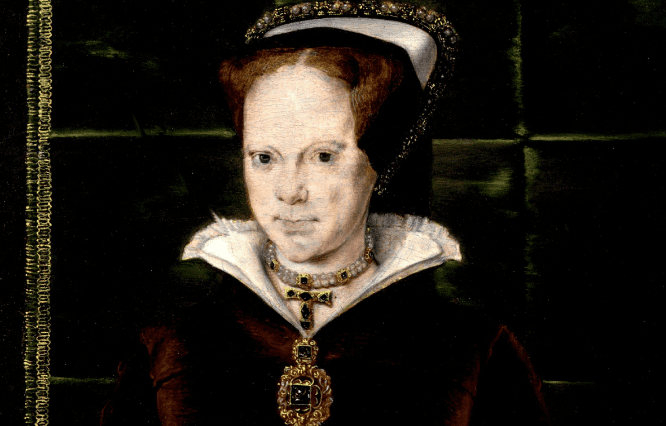 Wikimedia Commons
Wikimedia Commons
50. She Went Rogue
Mary became convinced that her false pregnancy was a punishment from God. Clearly, she had displeased the Lord by tolerating Protestants in her country. As a way to make good with the Big Guy upstairs, Mary decided that the time had come to take a hard line on religion in England. She locked up prominent Protestants in the realm, but soon, even that wasn't enough to satisfy her need for vengeance.
51. Her Reign Was Fiery
In 1554, Mary instituted the controversial "Heresy Acts" and officially began the darkest part of her legacy. These acts allowed Mary to punish Protestants for their religion, often by burning them at the stake. Unsurprisingly, almost 1000 Protestants chose exile over getting barbequed. In retrospect, these people made the right choice. England was about to become a terrifying place.
52. She Was Cut-Throat
Even though Mary had a dark side, no one can say that she wasn't clever. As part of her plan to "cleanse" England, she brought back old laws to make heresy a treasonable offence. Why? Well, Mary couldn't execute someone for not being Catholic. But if heresy counted as treason, she could slash her way through the kingdom. With the old laws back in action, she began her brutal mission.
53. History Did Her Dirty
Despite her persecutions of Protestants, Mary’s idea of rebuilding to a Catholic Britain wasn't that extreme. In England, Protestantism was still a new religion and a lot of people actually wanted the country to go back to Catholicism. Even so, Mary's tactics were, shall we say, extreme...
54. She Earned a Dark Nickname
In just three years, Mary's actions earned her the now-infamous nickname "Bloody Mary" and transformed her reign into "The Marian Persecutions." Of her many terrifying acts, one in particular has gone down in history: Queen Mary burned an astonishing 280 people at the stake. In comparison, her violent father burned 81 people. When it comes to bloodshed, it's hard to outdo King Henry VIII—but clearly, Mary managed.
55. She Was Cruel
There is one particularly terrifying story about Mary’s bloodlust. Apparently, Mary ordered that a woman named Perotine Massey be burned at the stake…even though she was pregnant. The story goes that Perotine actually gave birth in the flames—only for the executioner to grab the newborn infant and throw it into the fire with its mother. That's dark, even for Bloody Mary.
56. She Fought For Her Beliefs
Bloodlust wasn't the only thing motivating Mary's quest to wipe out Protestants. She felt her Catholic faith very deeply and remained devout for her entire life. When she and her little brother Edward were fighting about their different religions, Edward once demanded that she convert. Mary replied that she would rather be executed. However, there is another, less noble reason for Mary's hatred of Protestants.
57. Her Motivation Was Deranged
When Mary was a young girl, she watched as her father used Protestantism to cruelly divorce and then lock up her beloved mother, Queen Catherine of Aragon. Decades later, it's clear that she hadn't forgiven her dad. Historians believe that Henry's actions fuelled his daughter's staunch devotion to Catholicism...and her red-hot hatred for Protestants.
58. She Had an Axe to Grind
Mary executed a lot of Protestants. Most of them were strangers, but for some of her victims, Mary had a personal axe to grind. She spear-headed the now-infamous arrest and execution of the Archbishop of Canterbury, Thomas Cranmer. Why did she have it in for this guy? It's simple: He's the one who pronounced the marriage between Mary's mom and dad to be invalid. Clearly, Mary never let that one go.
59. She Was Merciless
There's another dark detail involved with Cranmer's untimely demise. When he was locked up and awaiting his punishment, Cranmer actually went back on his faith and said he'd become a Catholic. That should have satisfied Mary and saved him from the bonfire, but Mary had other plans. She coldly executed him anyway.
60. Her People Feared Her
As Mary set fire to her kingdom's "heretics" her actions (justifiably!) caused England to quake in their boots. Mary's popularity plummeted with each execution. And then she made another huge fumble: England had a single stronghold left in France—and it was Mary who lost it forever. This failure, combined with her resentful subjects, left Mary in despair. Unfortunately, things would not get better.
 The Tudors (2007–2010), Showtime Networks
The Tudors (2007–2010), Showtime Networks
61. She Endured Another Loss
In 1557, after Philip had been in continental Europe fighting various battles, he finally made it back to England and performed his royal duty. Soon after, Mary believed she was pregnant. Philip, on the other hand, felt certain that his wife was imagining things. Sadly, he was right.
62. She Never Got Her Wish
This time around, Mary wasn't undergoing a phantom pregnancy. Instead, the reason for her mysterious symptoms was much worse. Mary was now in her 40s and the fact that her periods stopped didn't mean she was with child. It meant she was undergoing menopause. At that moment, Mary admitted that she would never have a baby. Heartbroken, she did what she had to do.
63. She Gave Up
Mary had never much liked her half-sister Elizabeth. After all, it was Elizabeth’s mother who broke up Mary's parents. Making her the heir to Mary's throne was a tough pill to swallow, but Mary still did it, egged on by her husband Philip. He convinced his wife that it was the right decision...presumably without mentioning that he was planning to marry Elizabeth after Mary died.
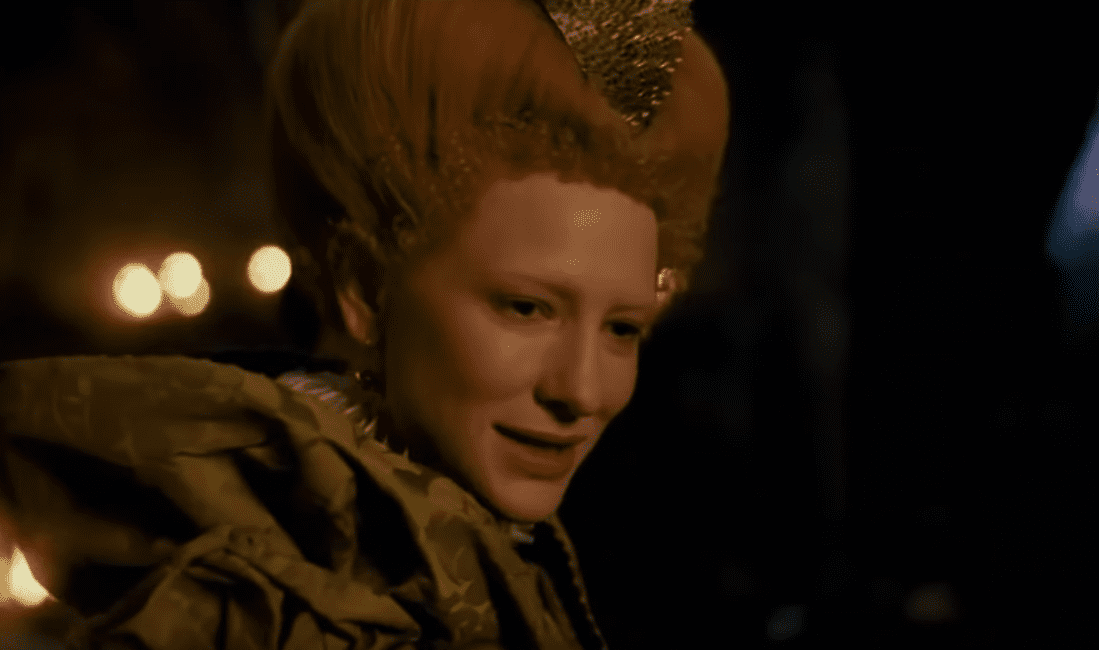 Elizabeth: The Golden Age, Universal Pictures
Elizabeth: The Golden Age, Universal Pictures
64. She Fell Ill
Beginning in May of 1558, Mary began to feel unwell. She complained of pains in her abdomen and over the next few months, declined further and further. On November 17, 1558, the queen breathed her last. She died, childless, during an influenza epidemic. To this day, the reasons for her demise are not clear.
65. She Perished Under Strange Circumstances
Some accounts suggest that the queen succumbed to a severe case of influenza. Modern scholars think that she may have had uterine cancer or ovarian cysts, and that her false pregnancies were caused by a malignant tumor. Either way, we know that Mary's demise was painful. And somehow, that's not even the worst part.
66. Her Husband Was Cold
Where was Mary's beloved husband Philip when she took her last breaths? By her bedside? Wiping the royal brow? Nope, he was in a fully different country. Philip was in Brussels when his wife passed on. To add insult to injury, when Philip wrote about Mary's demise, he simply said that he felt "a reasonable regret" over the whole thing. Romantic!
67. Her Will Was Chilling
When Mary realized that the end was coming, she drafted up her will, which had three specific requests. First, she wanted the crown to pay off the remaining debts of her father and half-brother. Second, she wanted her remaining money to go towards religious buildings. But the third request was by far the strangest. Mary wanted to be reunited with her mother. She requested that Catherine of Aragon's body be exhumed and buried next to Mary's grave. Sadly, all three of Mary's final wishes were ignored after her death.
68. Her Funeral Was Scandalous
Even from beyond the grave, Mary caused drama. At her funeral, John White, the Bishop of Winchester, provided a heartfelt sermon that praised the recently deceased queen. Unfortunately, his warm speech was maybe a little too effusive. When Elizabeth took over the throne, one of the first things she did was imprison her half-sister's supporter. Oh, but it gets so much worse.
69. She Was Disrespected
Elizabeth I has somewhat overshadowed Mary in the annals of history and unfortunately, in their final resting places too. When Elizabeth passed, her successor actually placed Elizabeth’s coffin on top of Mary’s in Westminster Abbey! He then erected a large monument in praise of Elizabeth’s reign, and it only had a small inscription to Mary. That’s just cold.
 Mary Queen of Scots (2018), Focus Features
Mary Queen of Scots (2018), Focus Features
70. Her Ex Betrayed Her Memory
Once Mary passed, her widower Philip did what we all expected. Barely a moment after Mary's funeral mass ended, he proposed to Elizabeth. As in his marriage to Mary, Philip wasn't exactly motivated by love. He just wanted to hold onto power. Elizabeth, perhaps seeing how Philip had treated her half-sister, wisely rejected his advances. Grossly, Philip later went on to marry his own niece.
71. She Has a Bad Reputation
When Elizabeth took the throne, she returned Protestant rule to England. With this shift, the court quickly framed Mary as a Catholic tyrant—but as we've seen, the real story is much more complicated. Not only was Mary's Catholicism quite popular, she was actually far less vindictive than her father. Henry executed somewhere between 57,000 and 72,000 people during his reign, including not one but two of his own wives. Despite this, as the Smithsonian Magazine notes, no one calls him "Bloody Henry."
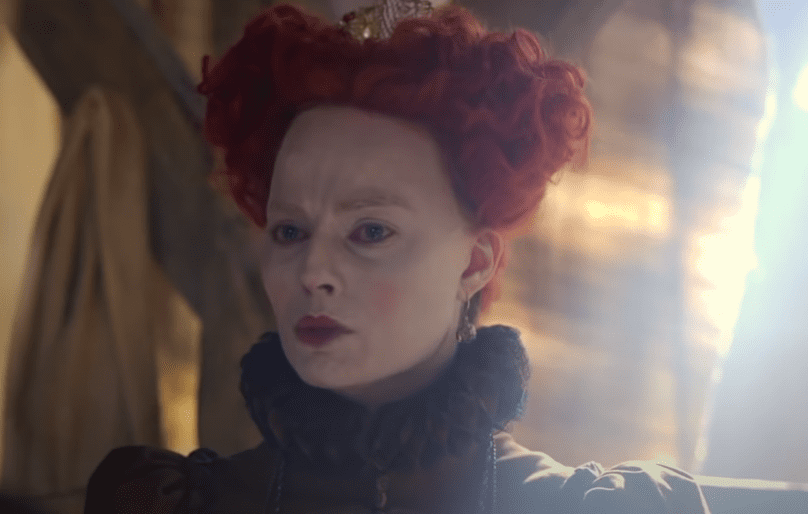 Mary Queen of Scots (2018), Focus Features
Mary Queen of Scots (2018), Focus Features
72. She Loved to Gamble
Mary wasn't just a bloodthirsty monarch. Like anyone else, she had lots of different sides of her personality—and one of them is pretty surprising. Back in her day, Queen Mary was quite the card shark. She loved buying lavish new playing cards and was an avid gambler.
73. She Stoked a Conspiracy Theory
Even after she passed away, one of Mary's stories took on a powerful afterlife. Mary’s false pregnancy spurred rumors that the child of James II and Mary of Modena was actually an impostor, smuggled in to convince the people of a new heir to the throne of England. The rumors specifically cited the events of Bloody Mary’s reign, as Mary of Modena was also a Catholic.
74. She Had Famous Haters
Even though Mary was rather zealous when it came to persecuting Protestants in England, it still can't be said that she was more bloody than her father, Henry VIII. So why is Mary I still referred to as "Bloody Mary"? Part of the answer lies in the figure of John Foxe. An exiled but popular Protestant historian, Foxe wrote extensively on persecuted protestants, and his work, still in print, has kept this dark aspect of Mary's reign alive throughout the centuries.
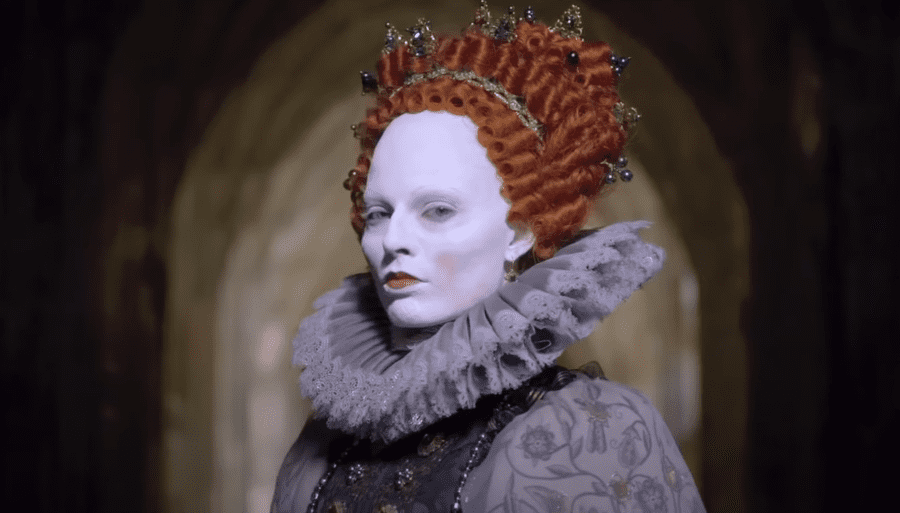 Mary Queen of Scots (2018), Focus Features
Mary Queen of Scots (2018), Focus Features
75. She Has a Ghastly Legacy
To this day, Queen Mary is associated with a dark urban legend: “Bloody Mary.” The story goes that if you turn off the lights, look at your reflection, and chant “Bloody Mary” three times, you’ll see a woman, often covered in blood, screaming about how you’ve stolen or hurt her baby.

